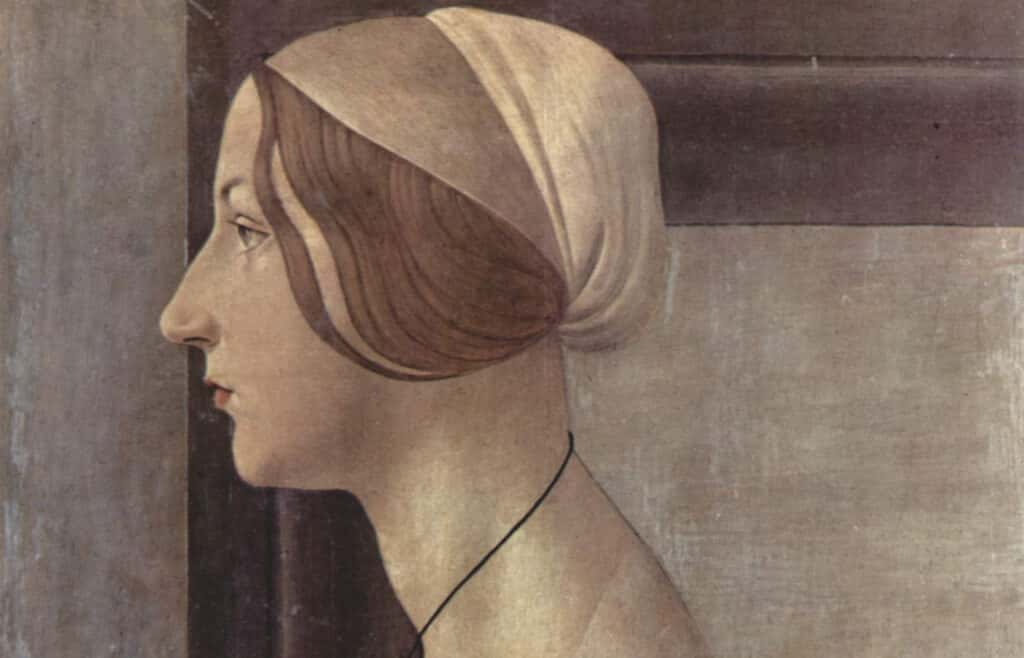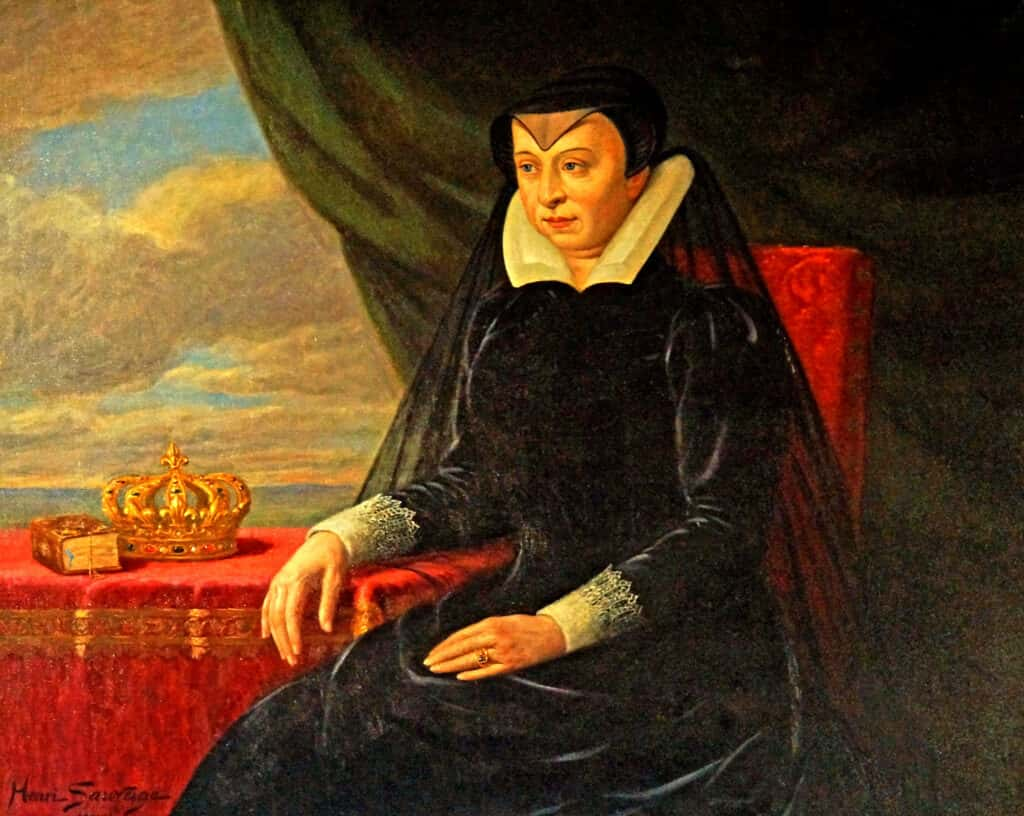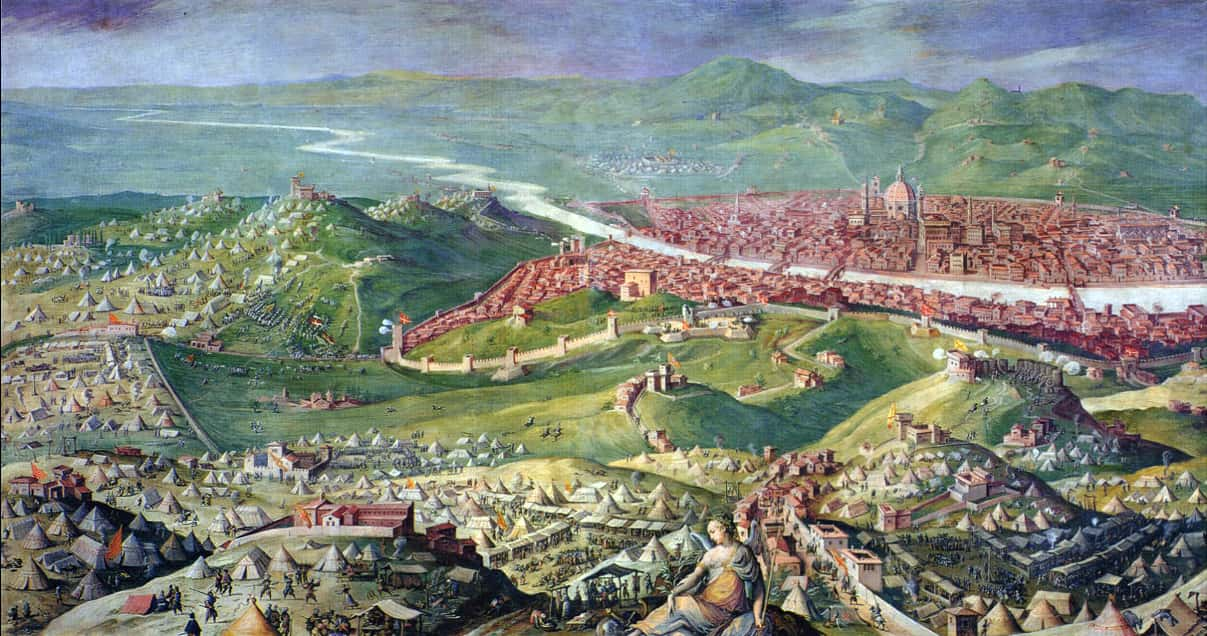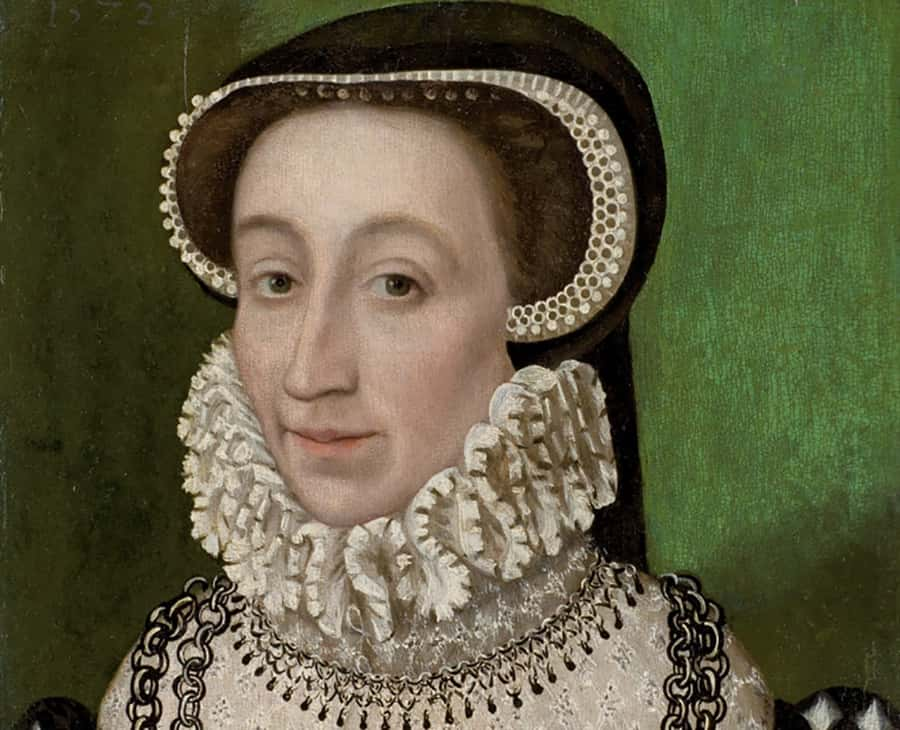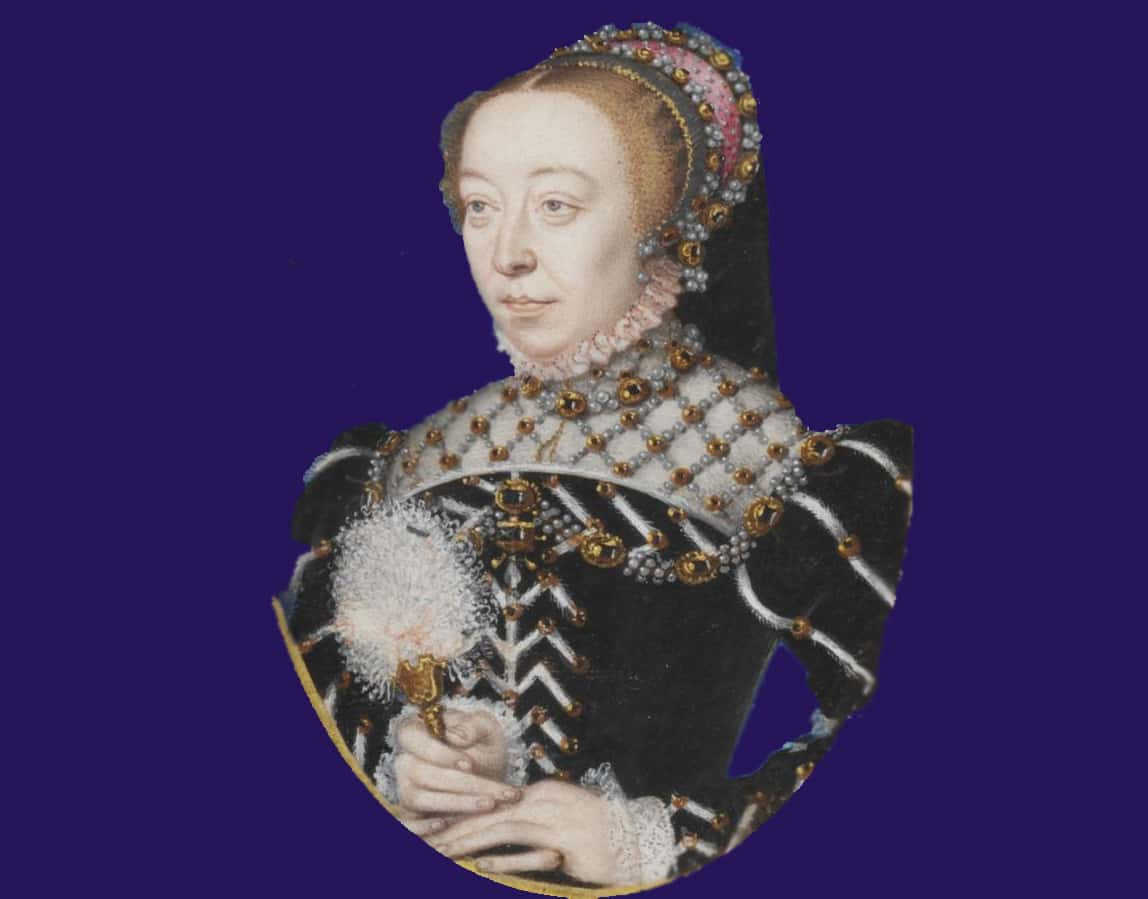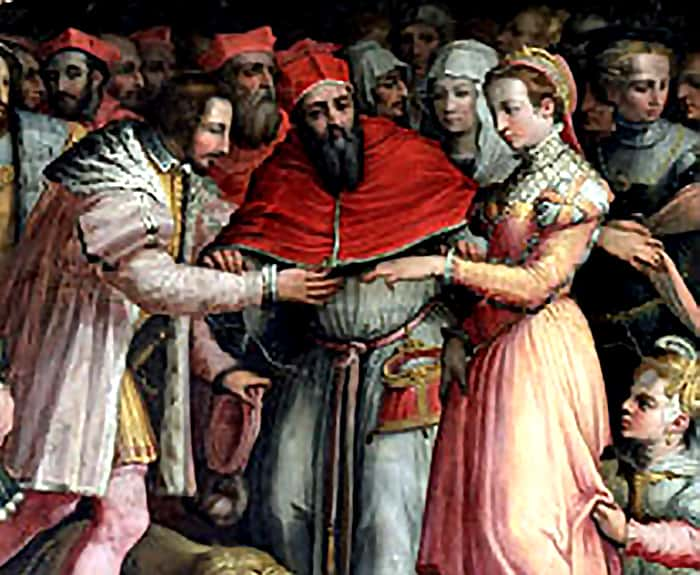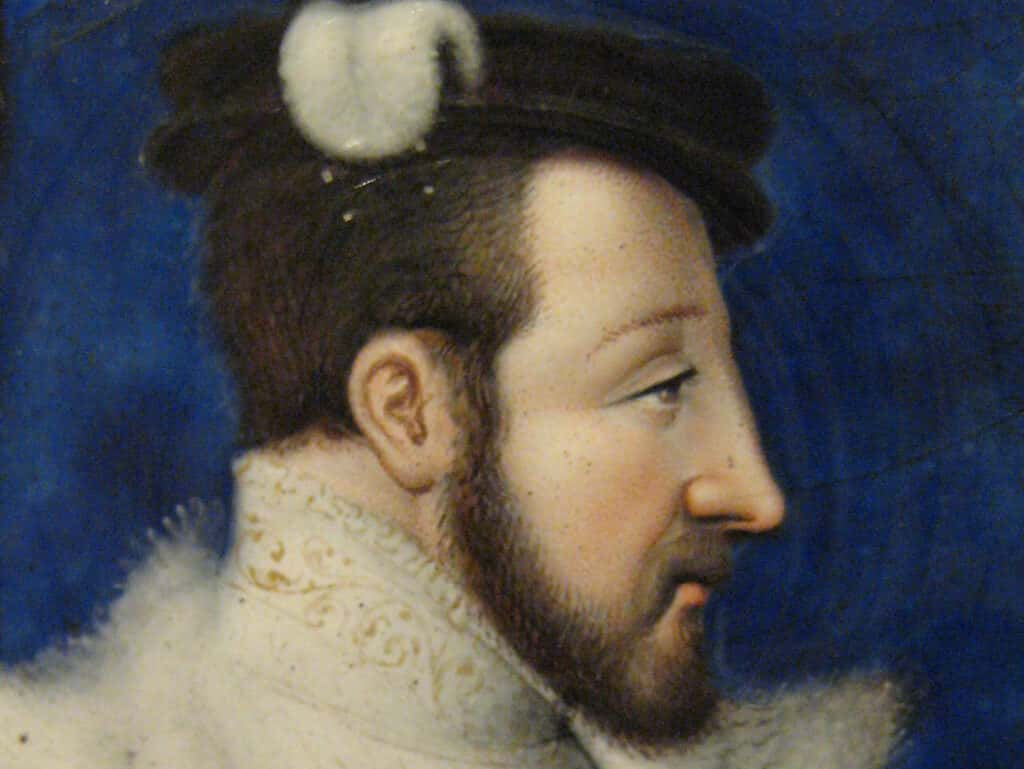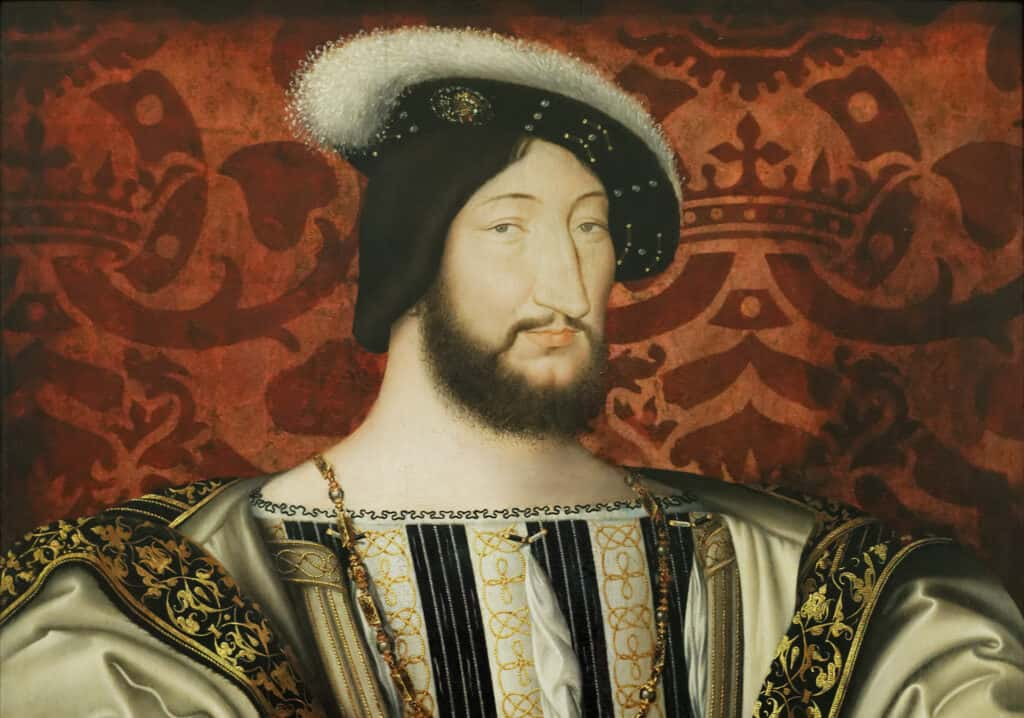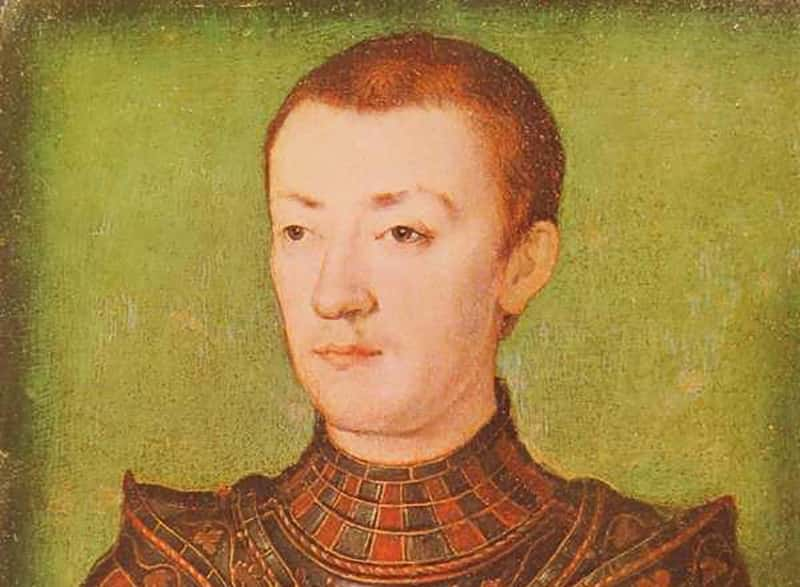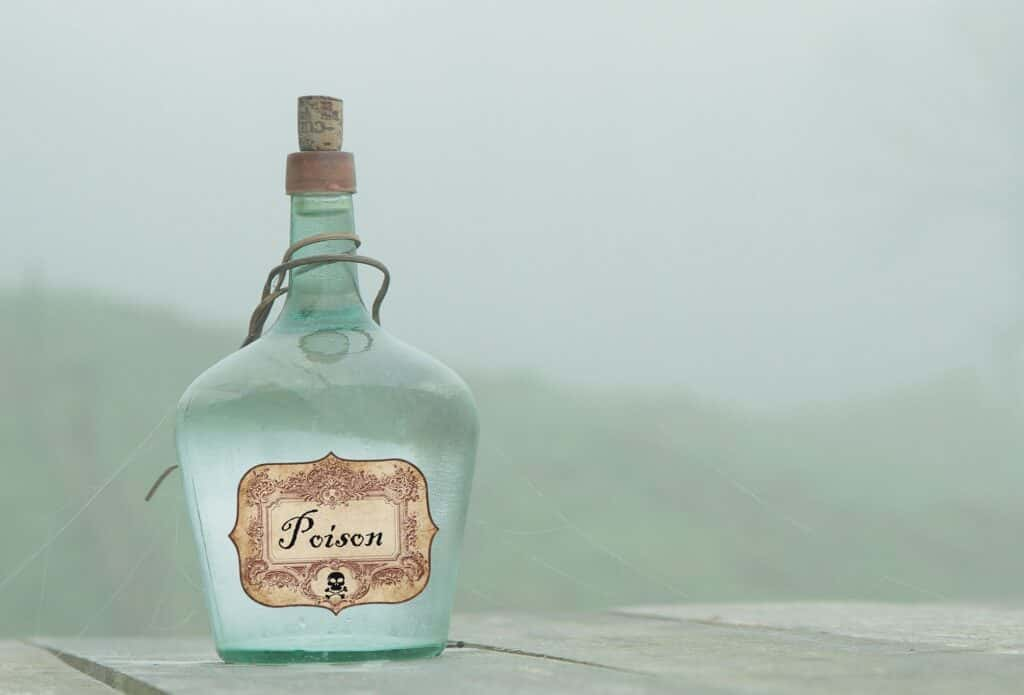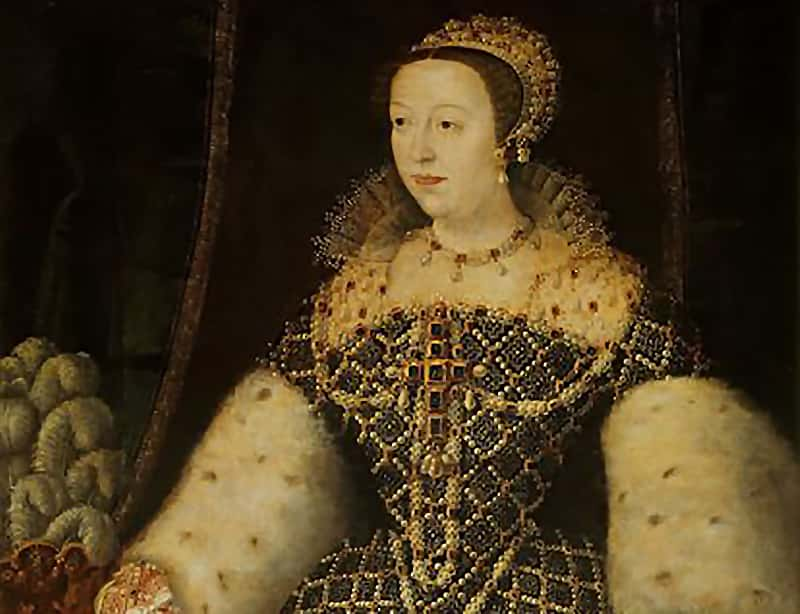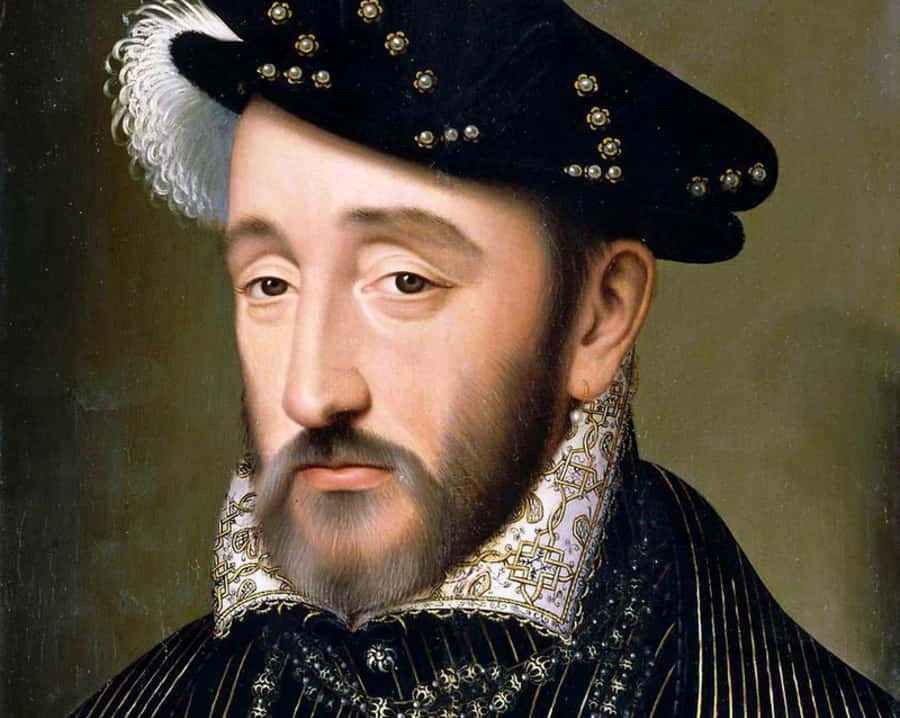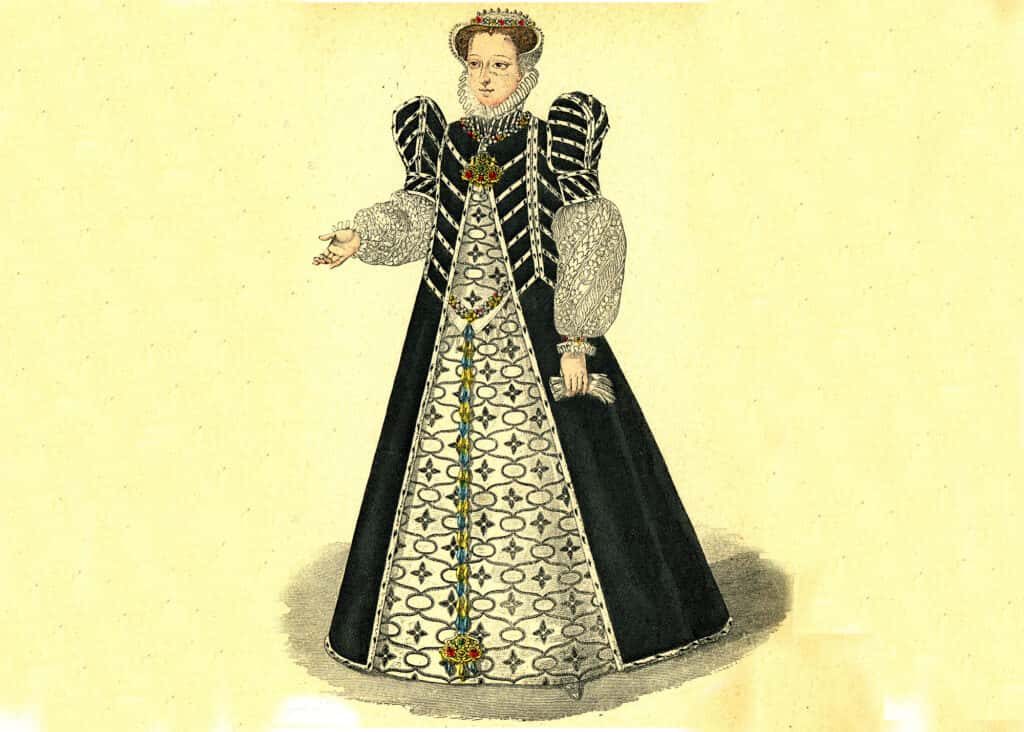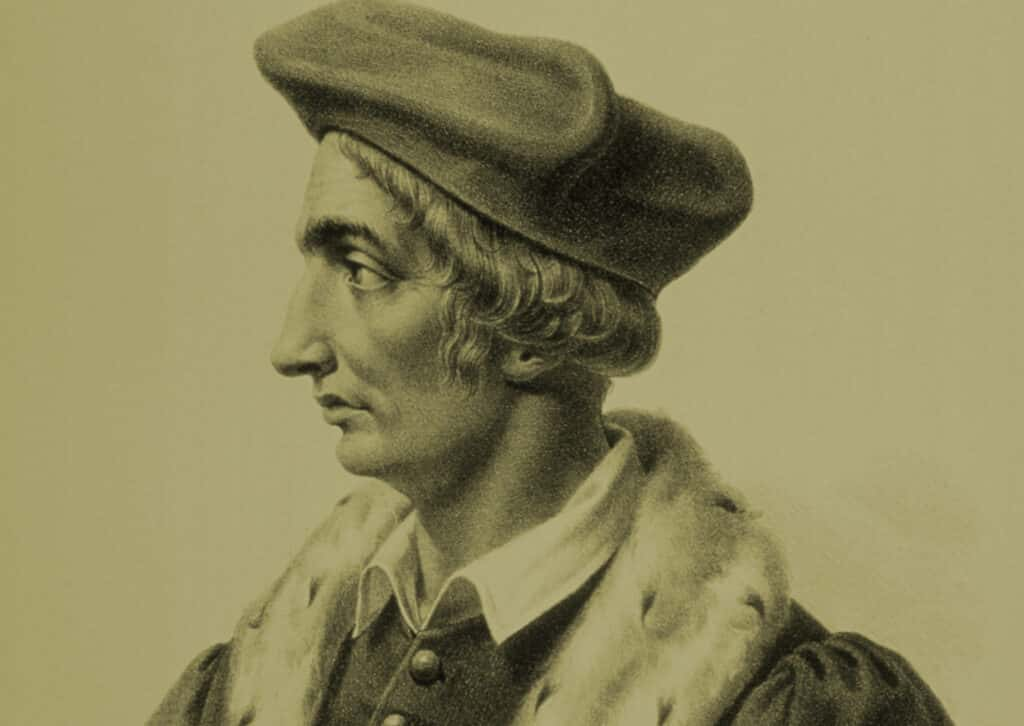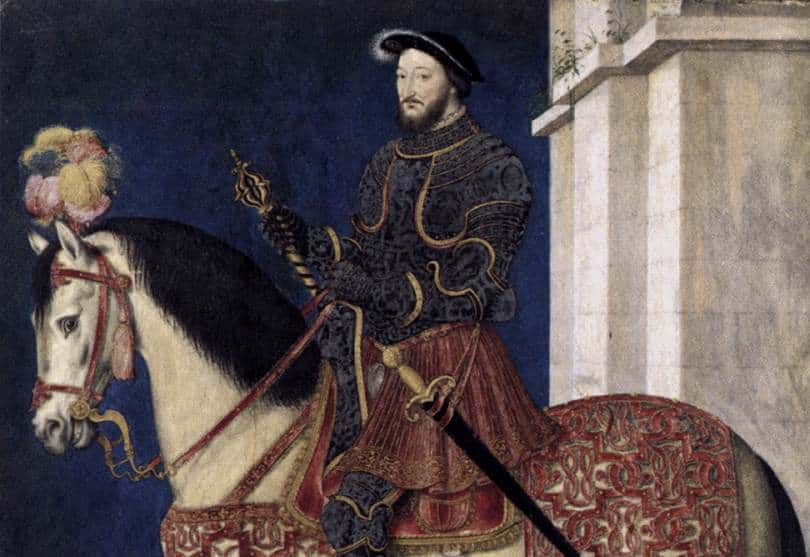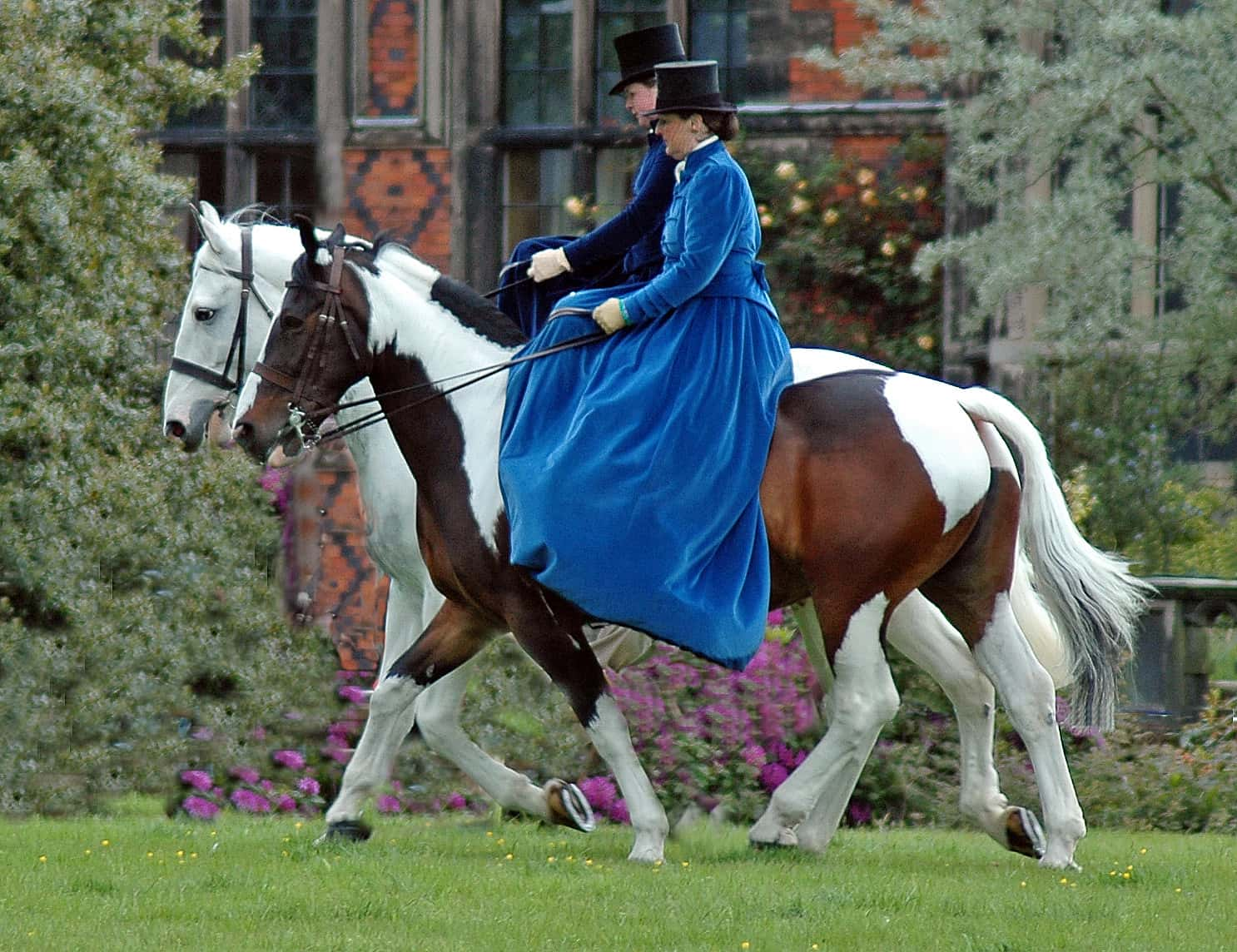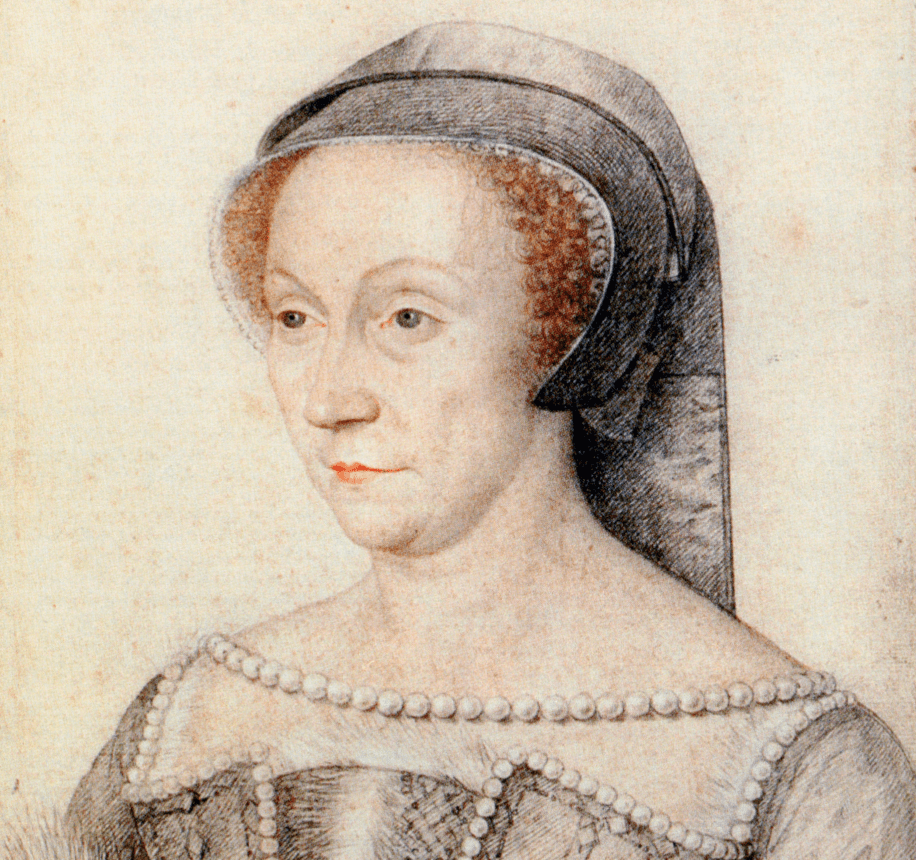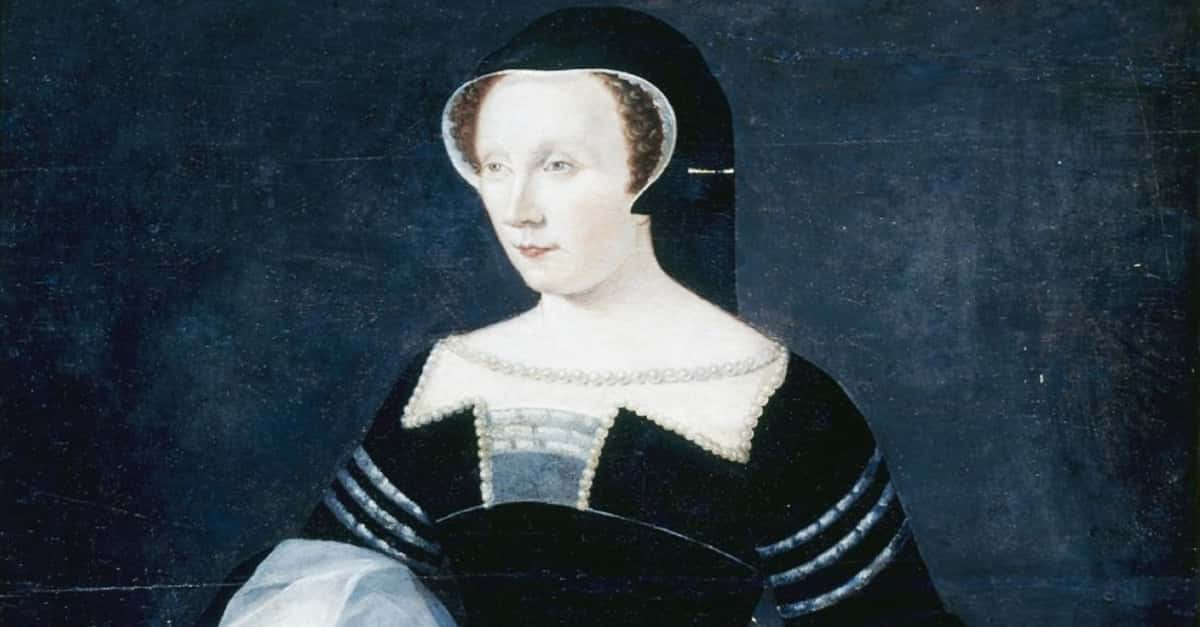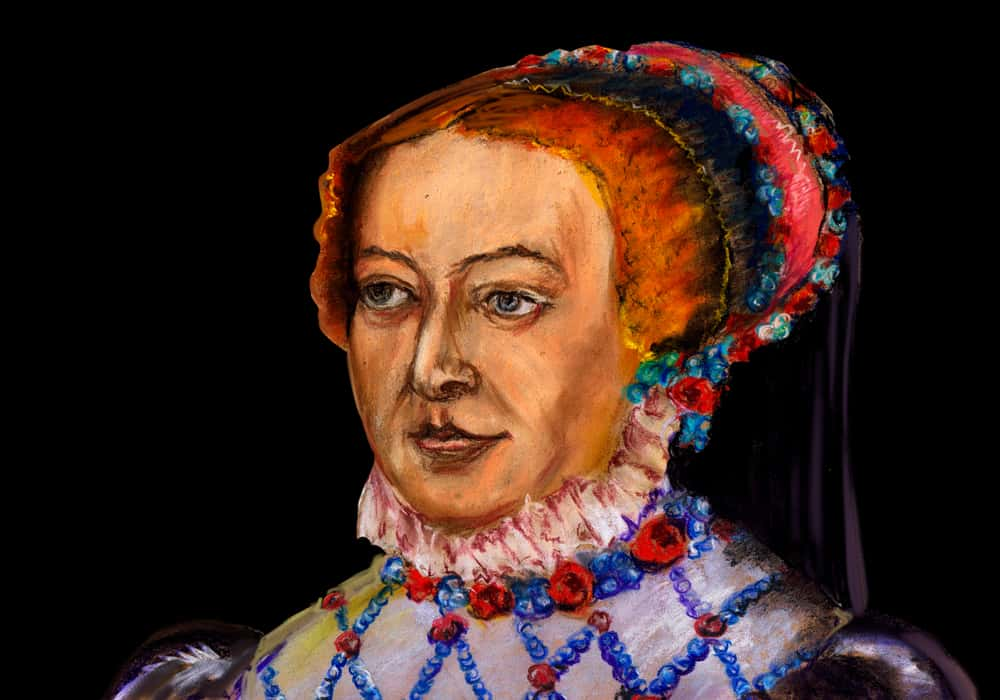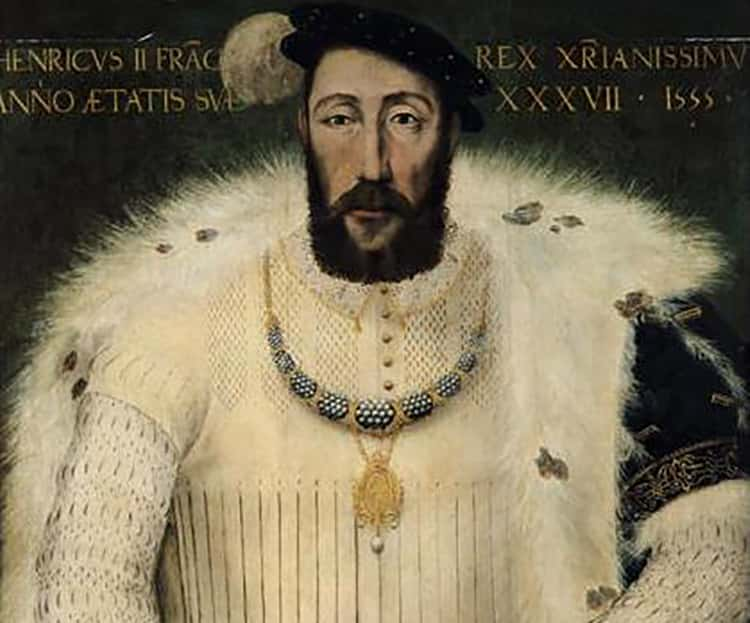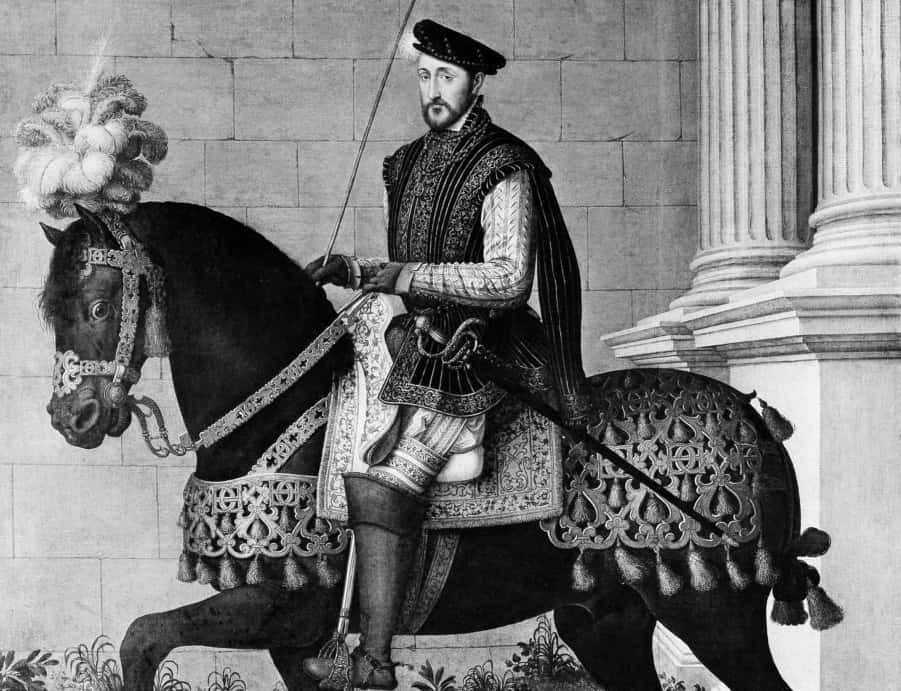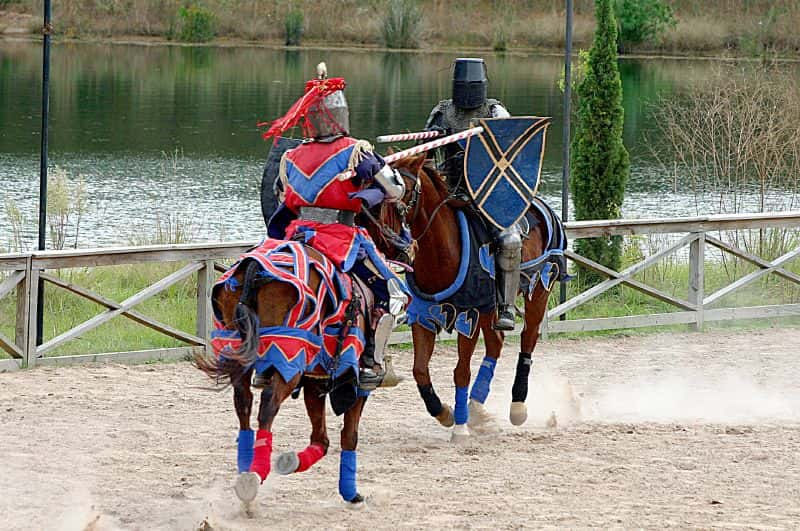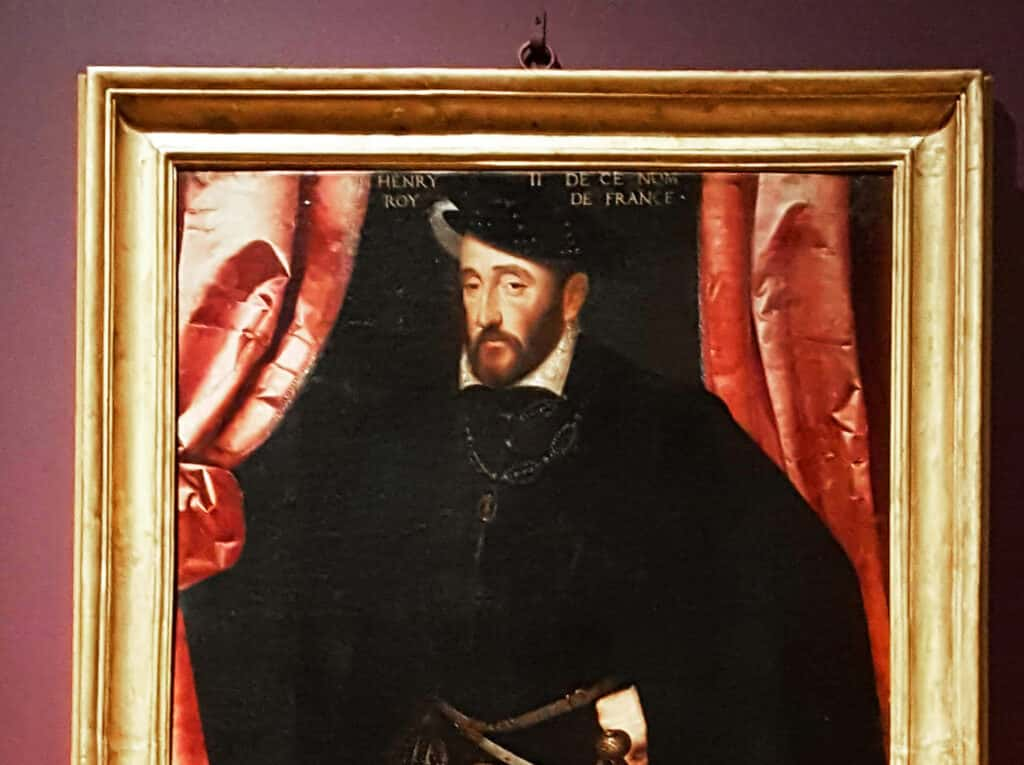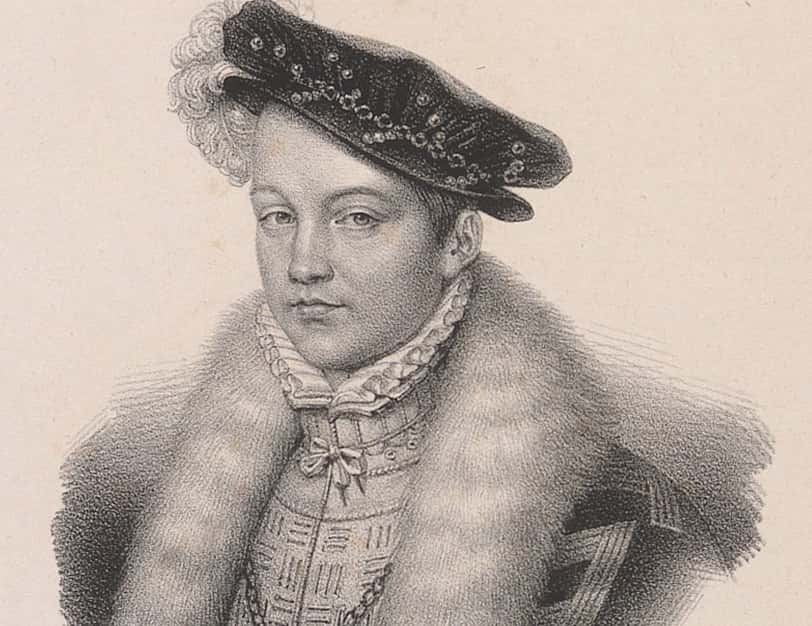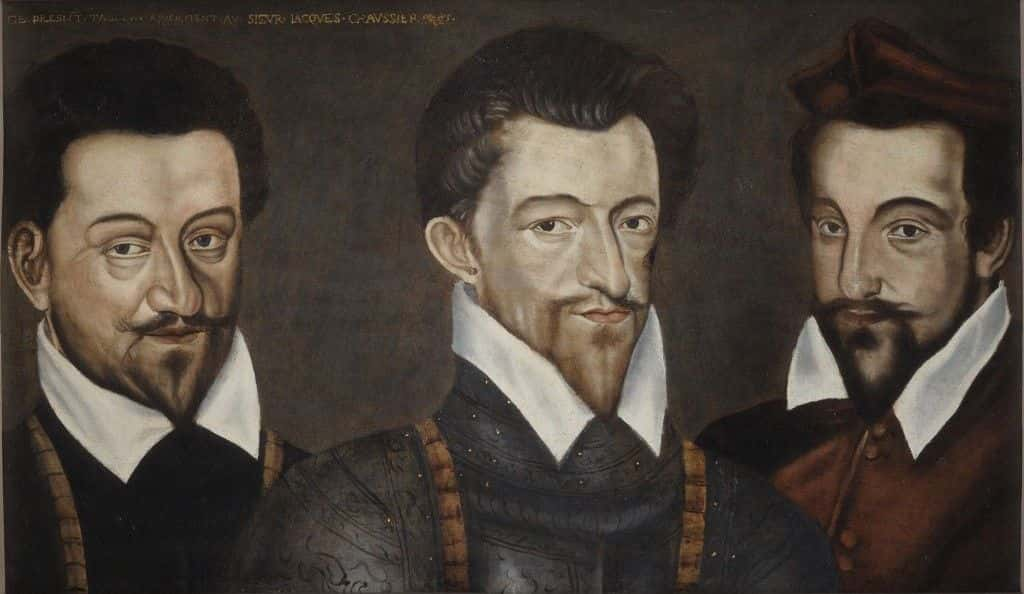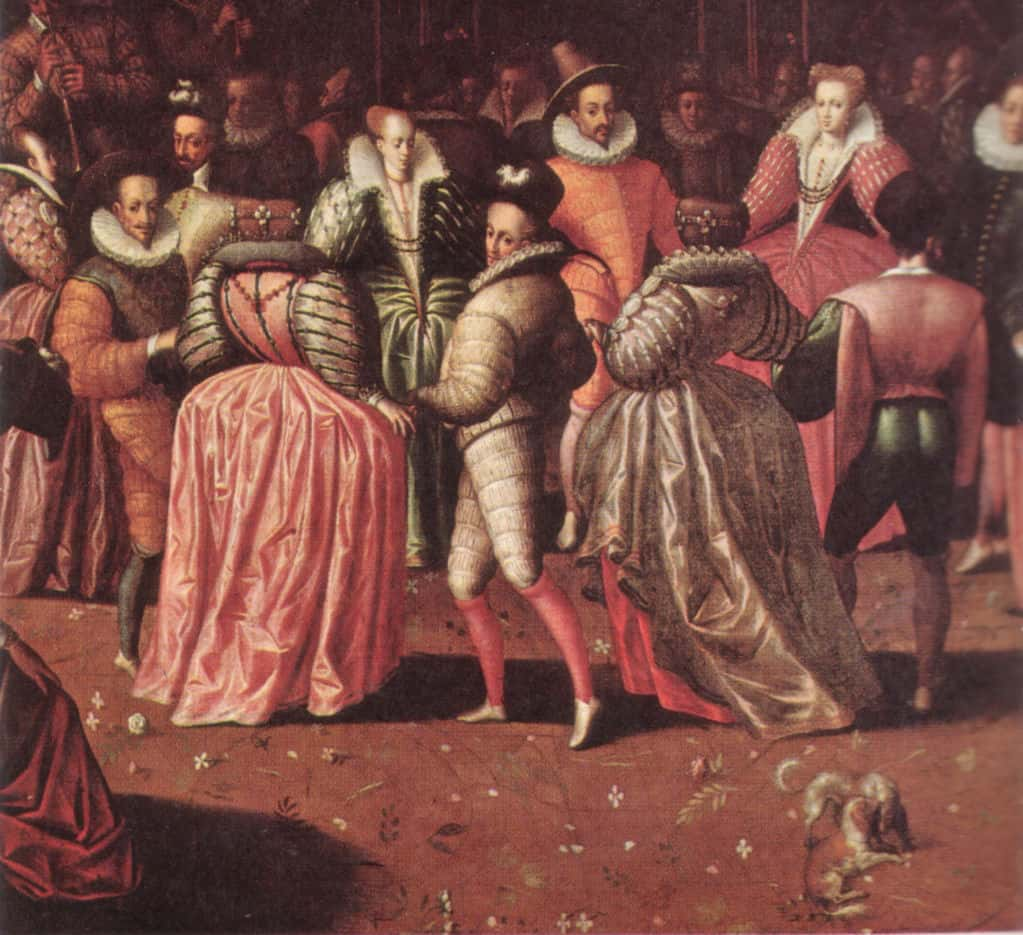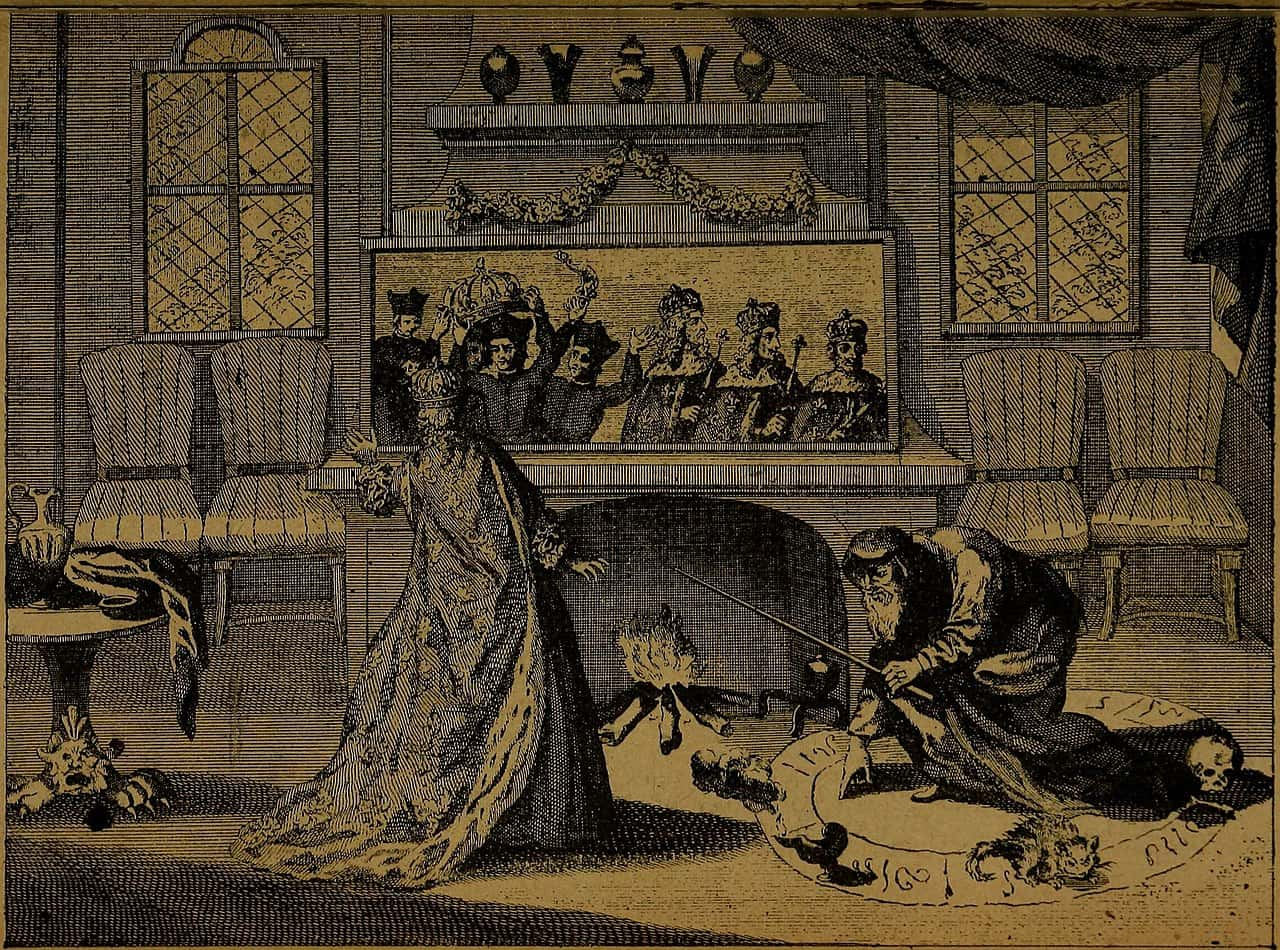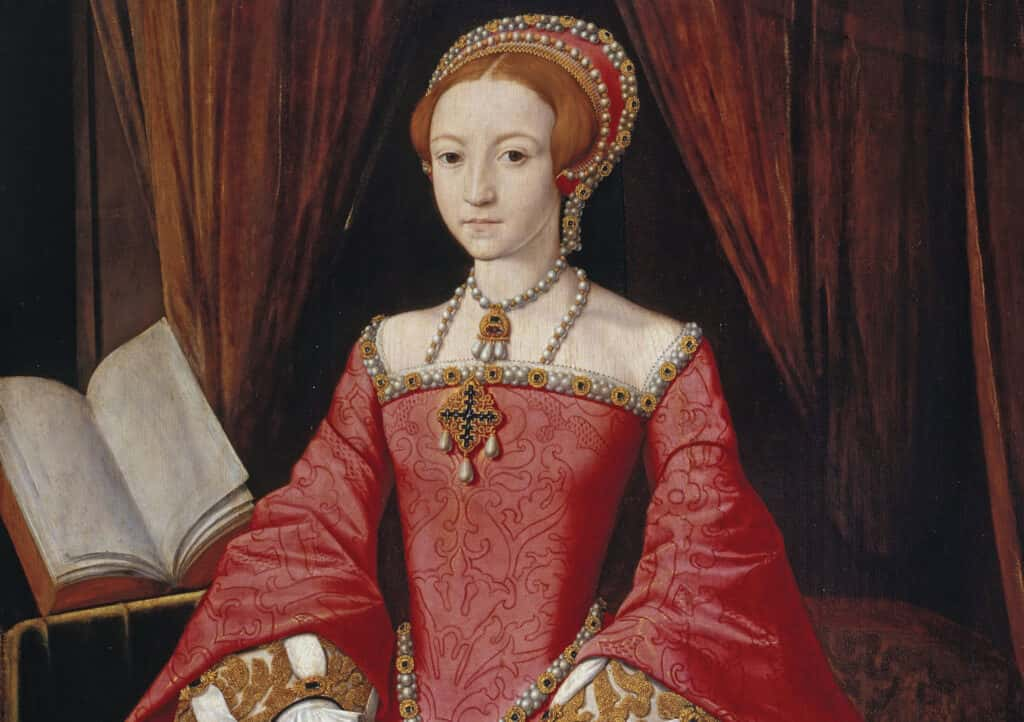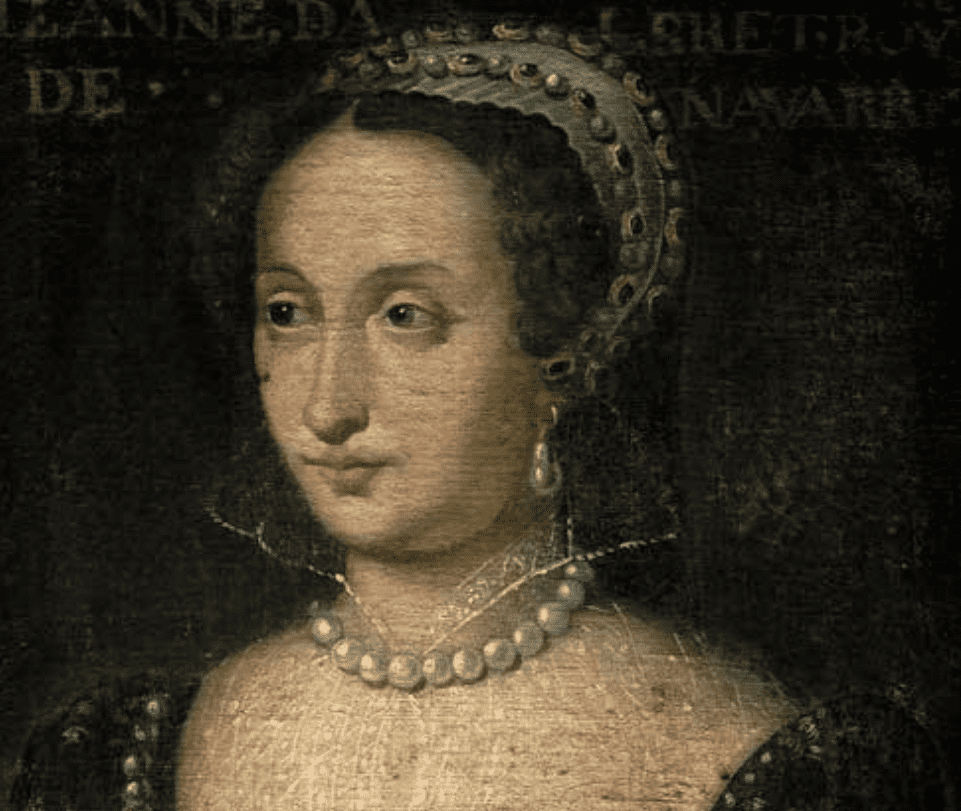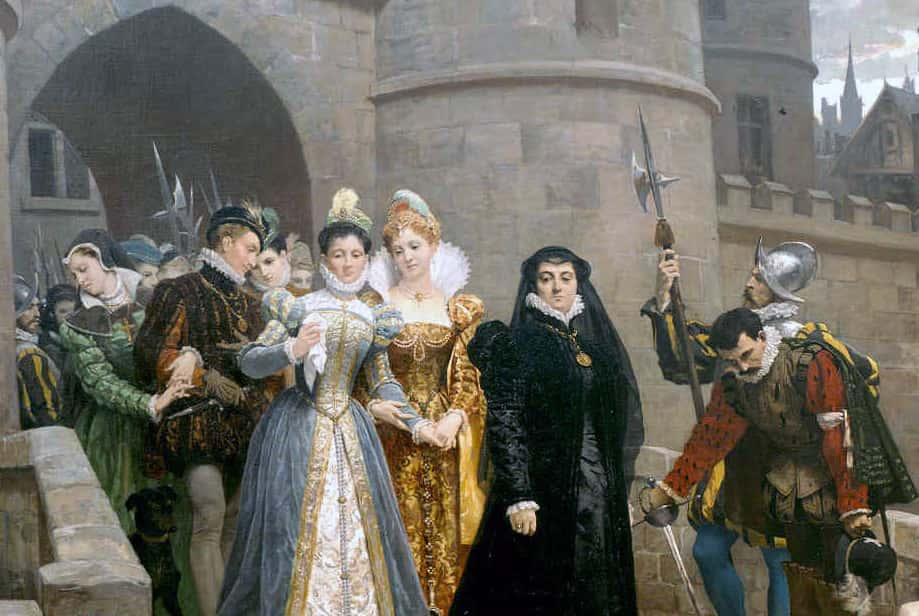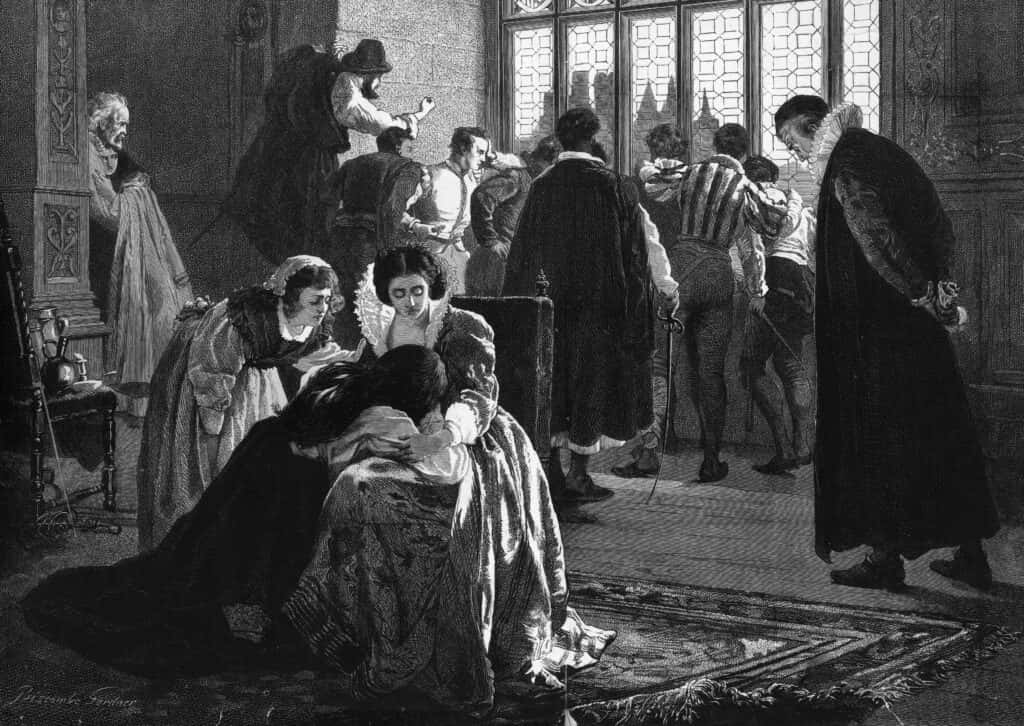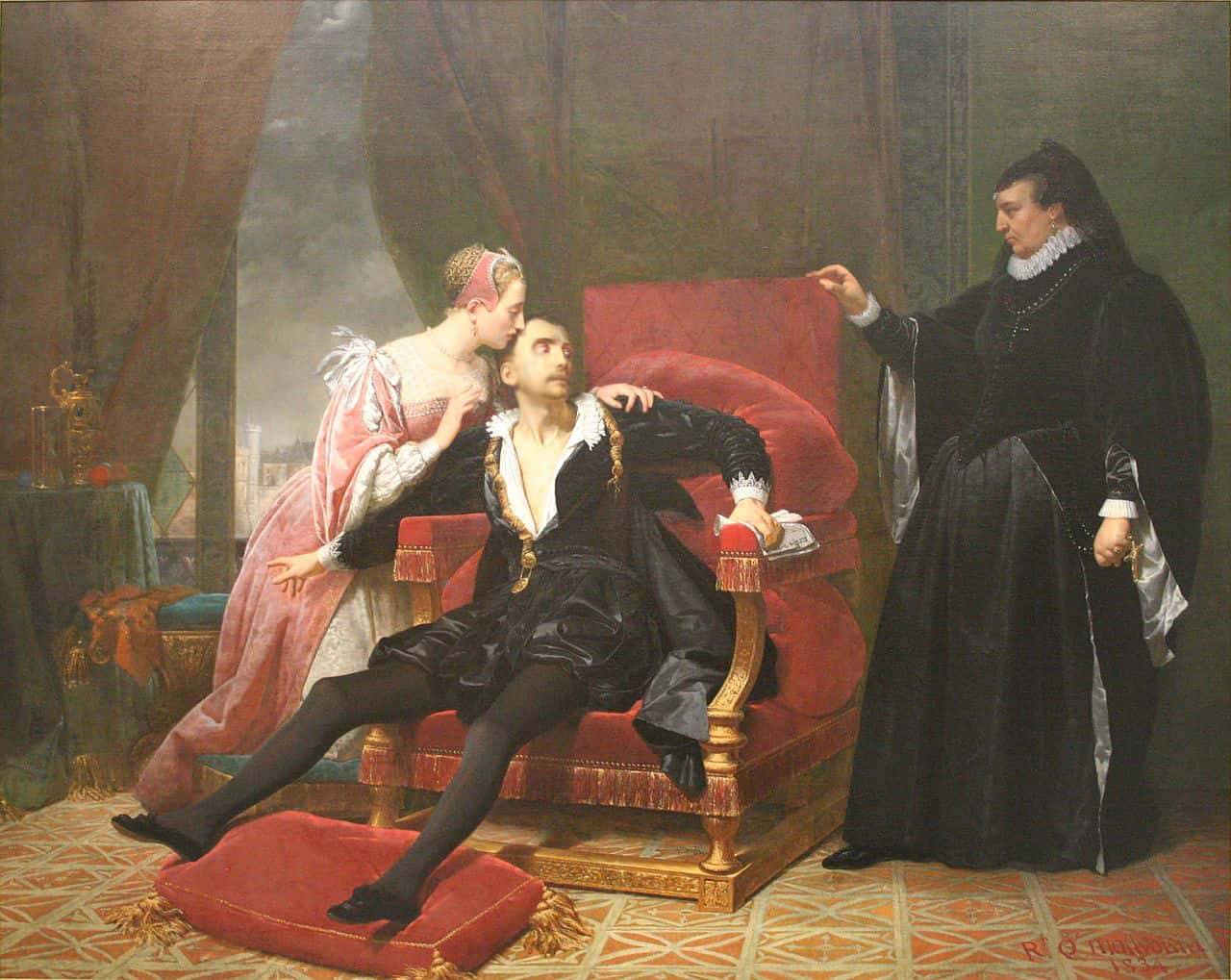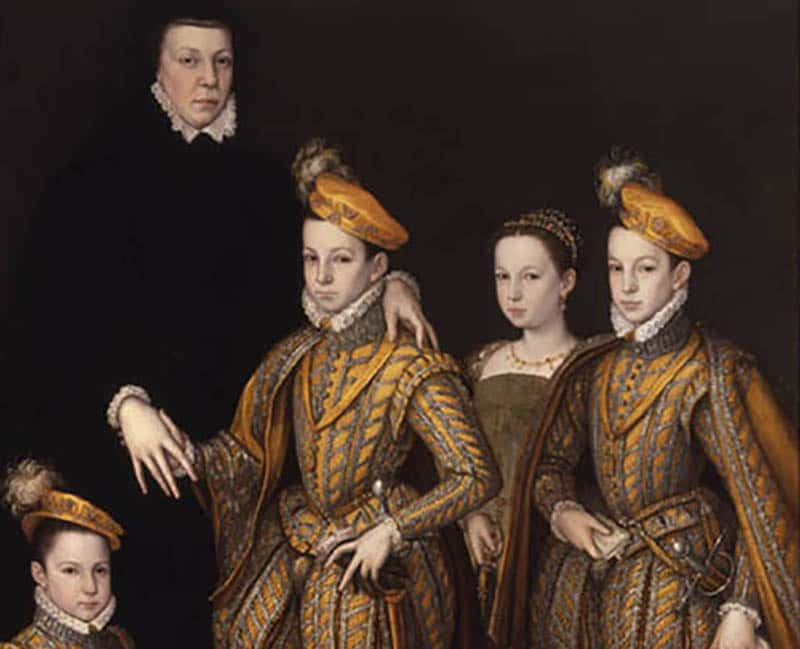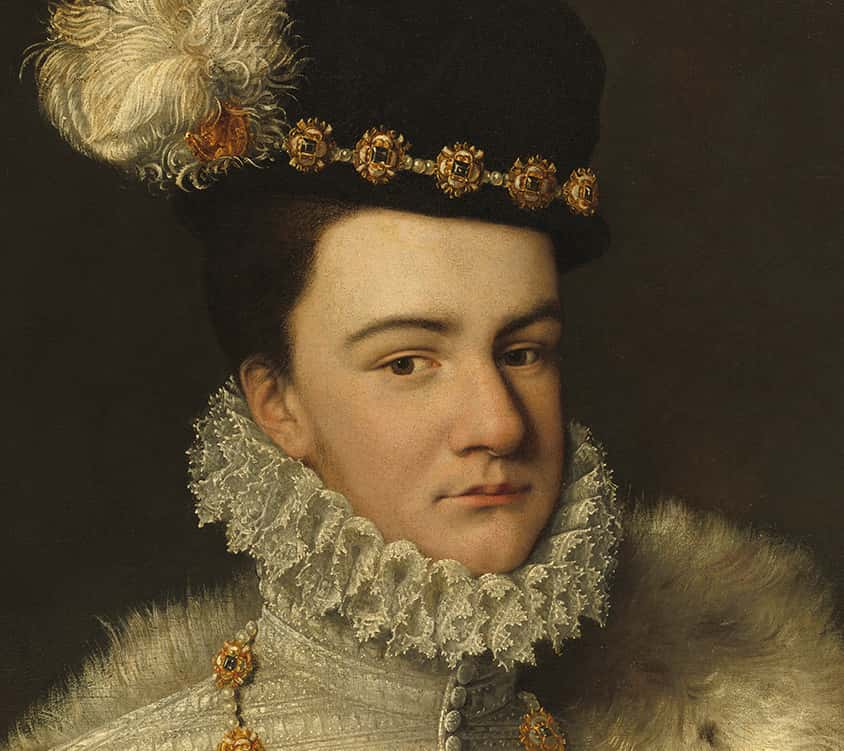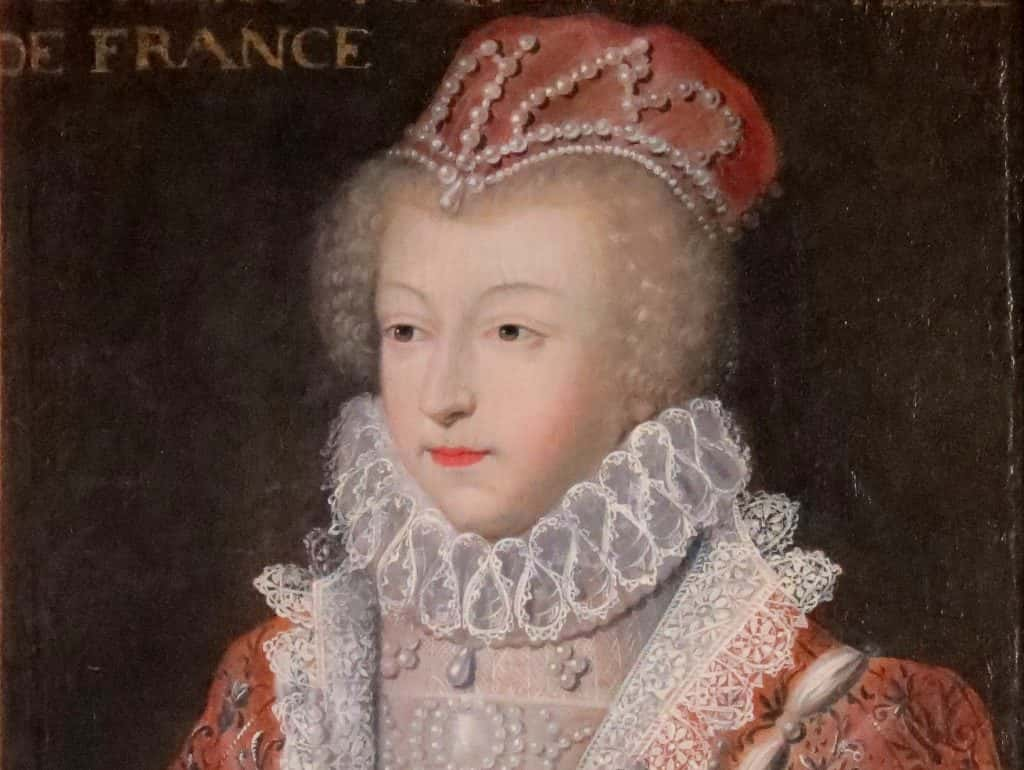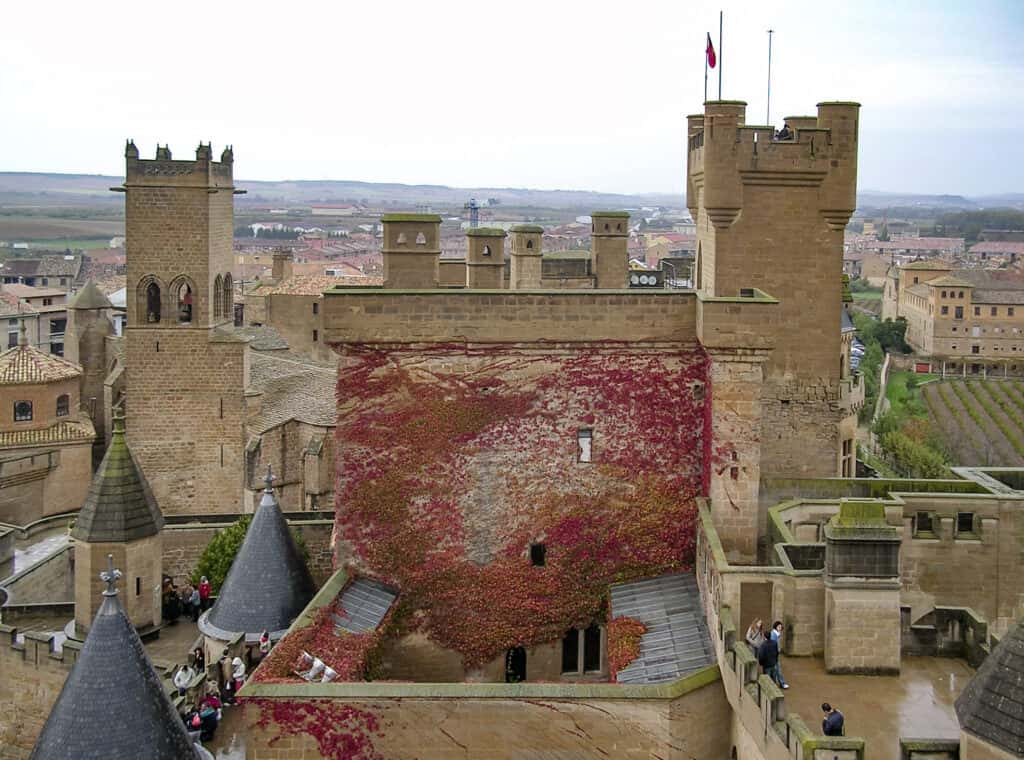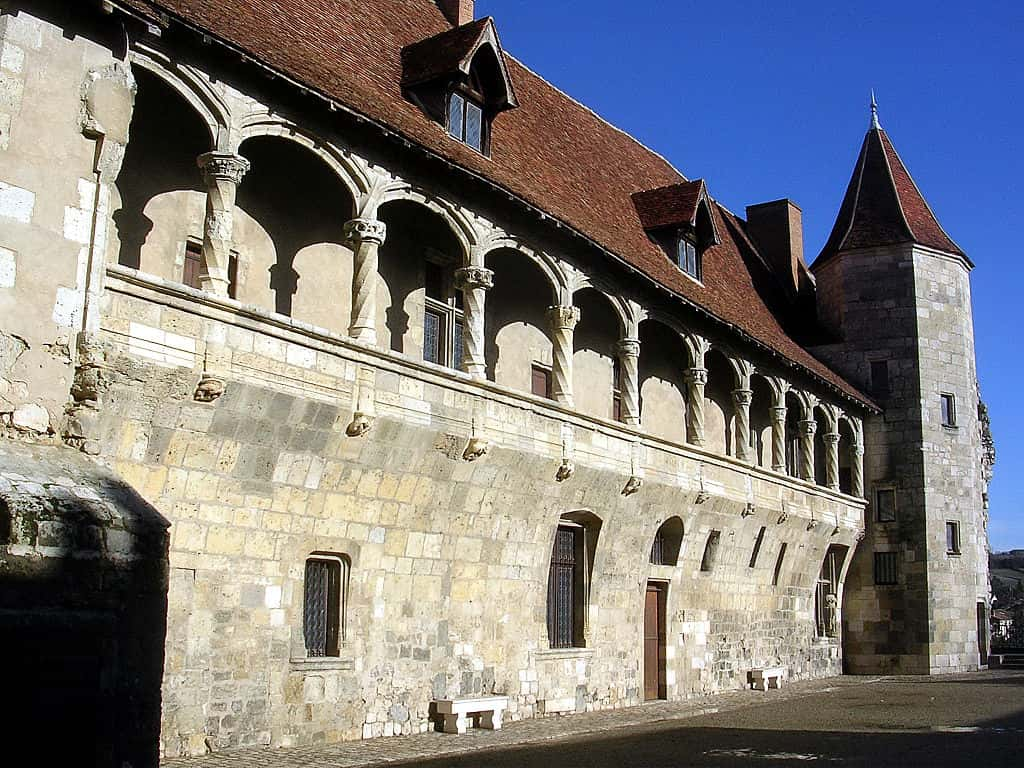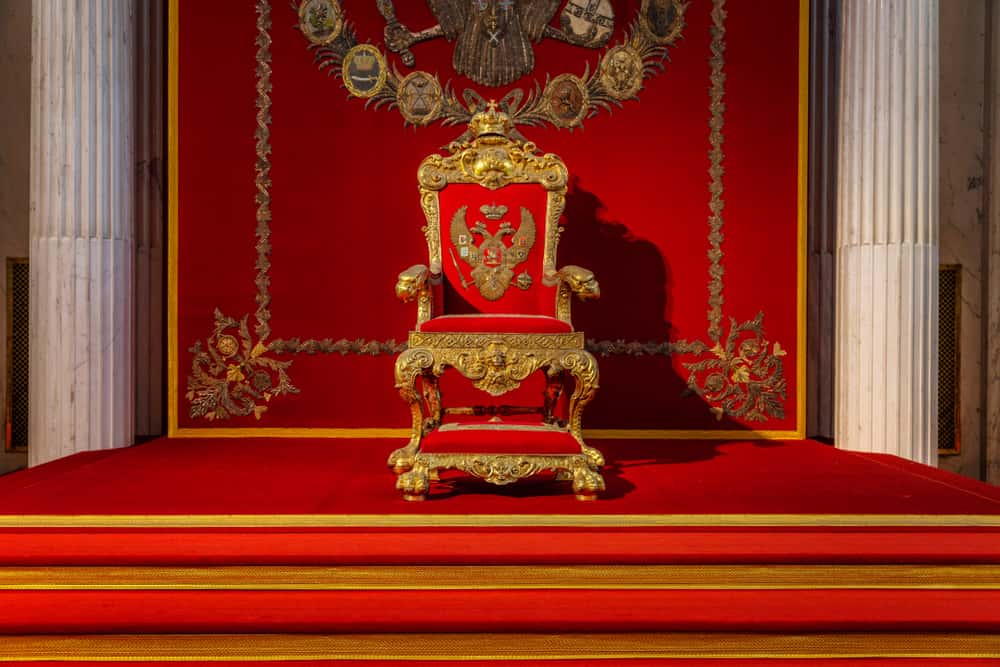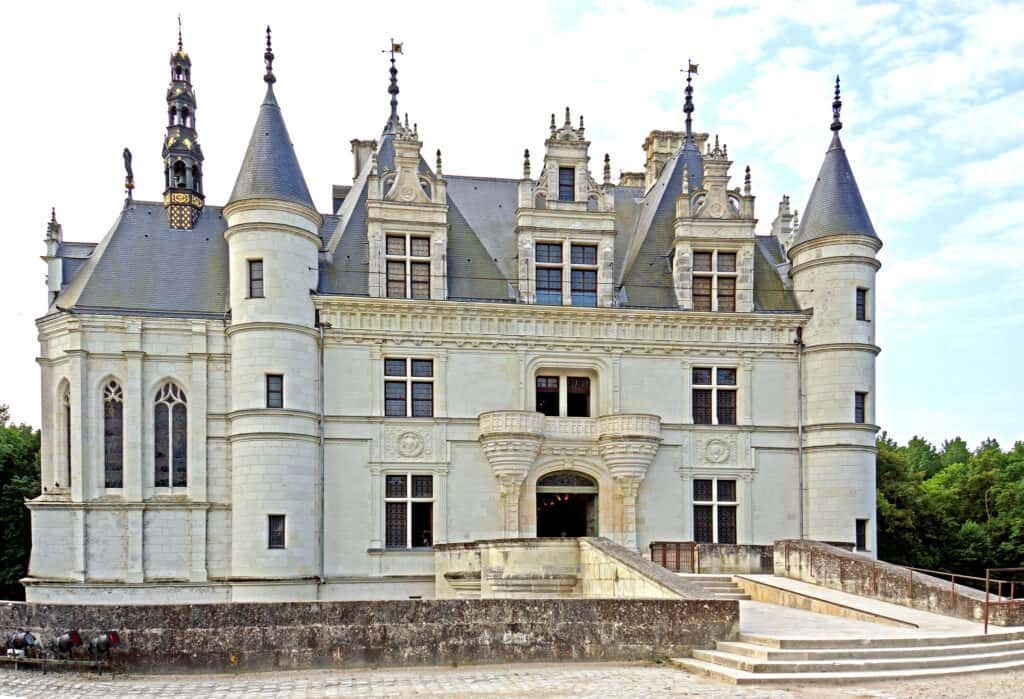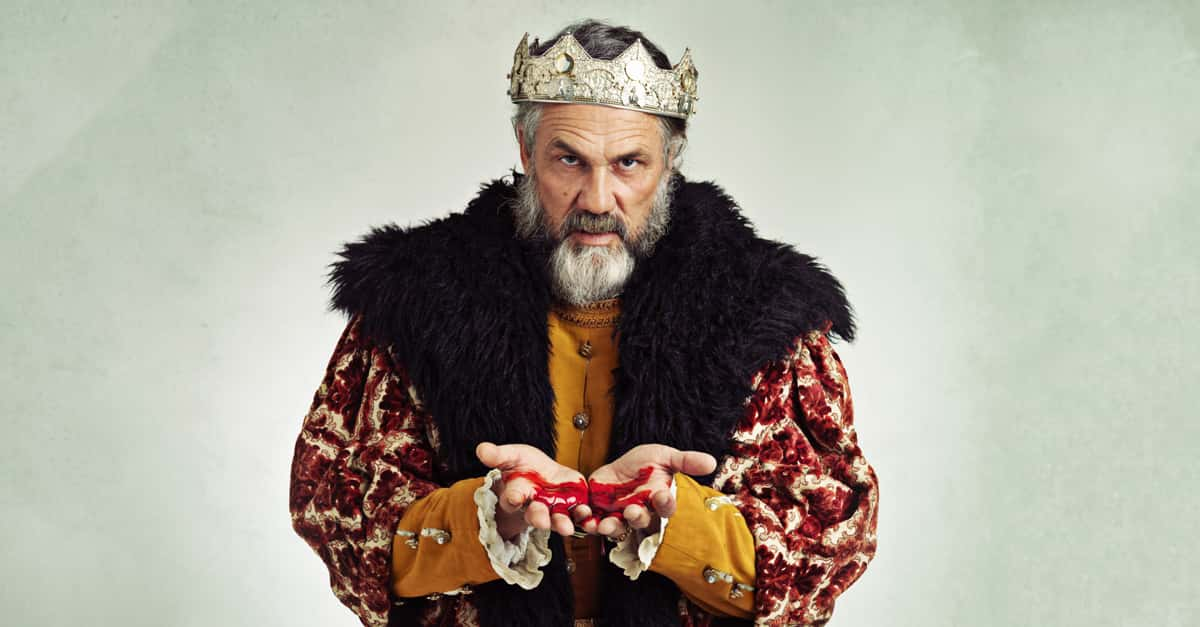From her untimely birth, “security” was perhaps a foreign concept to Catherine de Medici. She went from a prisoner of war in Italy to a fertility-challenged princess of France—but nothing was going to keep this ruthless manipulator from the power she craved. Catherine fought and clawed her way to the highest echelon of European society, no matter who or what stood in her way. Read on for scandalous facts about Catherine de Medici, the deadly Queen Mother of France.
Catherine de Medici Facts
1. The Orphaned Duchessia
Within a month of her birth, illness killed both of Catherine’s parents. For the rest of her childhood, the vulnerable Medici heiress would be shuffled between relatives and convents to protect her from the family’s enemies in an increasingly volatile Italy.
2. More Deaths in the Family
Catherine de Medici never knew a stable childhood. After her parents died, her grandmother, Alfonsina Orsini, took custody of her, but more tragedy was on the horizon. Alfonsina died just a year later, and Catherine was sent off again. She jumped around from family member to family member for the first years of her life, but by 1523, everything was about to change…
3. Uncle Pope to the Rescue...For Now
Catherine’s fortunes shifted when her uncle Giulio de Medici became Pope Clement VII. Clement brought his young niece to live in an extravagant palace in Florence, where the people took to fondly calling her “The Little Dutchess". It seemed as though Catherine had finally found peace—but it was all about to be ripped away.
4. A Pleasant Prison
Medici power in Florence came crashing down in 1527. Cardinal Silvio Passerini overthrew Pope Clement, and suddenly Catherine's peaceful childhood was thrown into chaos once again. Passerini's forces took Catherine hostage and sent her off to live alone in a series of convents. She was taken from her beloved uncle and his extravagant palaces—but Catherine found a surprising silver lining in her captivity:
Life in the convent was simpler and safer than what she was used to, and one chronicler calls this period "the happiest time of her entire life". Once she left the convent walls, there was only danger and intrigue awaiting her.
5. Whatever It Takes
Pope Clement was desperate to regain his power—and he was willing to make a deal with the devil for it. He begged Charles, the King of Spain, for help. In return, he promised to crown Charles the Holy Roman Emperor. The king leaped at the idea and marched his armies towards Florence—but this would spell disaster for the Little Duchess who was being held captive within the city's walls.
6. Trapped in a Hornet's Nest
In 1529, Charles besieged Florence, and the forces who held Catherine de Medici prisoner began to get restless. Some of the more unruly soldiers began to resent that their young hostage got such hospitable treatment. Some suggested they should kill her, some wanted her chained up on the walls of the city as a warning—but some soldiers had an even more disturbing suggestion: She should be given to the troops for "entertainment".
As the siege wore on, Catherine's situation grew more and more dire—who knows what would have happened if it had lasted much longer.
7. Time Is Running Out
In 1530, anti-Medici armies flanked the nunnery where young Catherine de Medici took refuge. The public debated whether the 11-year-old heiress should simply be killed or sent to a house of ill-repute to “devalue” her in the Pope’s marriage plans. But just as the mob was about to finally get its way, salvation appeared on the horizon.
8. Finally, Freedom
Thankfully, Florence surrendered that same year, before any real harm could come to Catherine. Pope Clement immediately brought her to Rome, where he greeted her with tears in his eyes. She was finally safe—but her adventures were just getting started. Clement had gotten her safely out of Florence, and now it was time to find his young orphaned niece a husband.
9. The Republic of Male Opinions No One Asked For
Contemporaries loved to highlight that Catherine de Medici was no great beauty. Even in her youth, a Venetian envoy described her as “small of stature, and thin, and without delicate features, but having the protruding eyes peculiar to the Medici family". Another observer drew attention to Catherine’s face as “heavy-looking” and her body as underdeveloped, declaring that “altogether this little girl does not look like she will become a woman for a year and a half yet". Hey guys, she was a kid. Can we chill?

History's most fascinating stories and darkest secrets, delivered to your inbox daily.
10. The French Had No Idea What Was Coming
Pope Clement hit the jackpot when the King of France, Francis I, offered up his second son for marriage to young Catherine de Medici. Sure, young Henry, Duke of Orleans wasn't in line to be king, but Catherine was an orphan, and even worse, she was technically of common birth. Clement jumped at the offer and they made the match. Francis didn't realize it at the time, but he had just invited a viper to the French court—and the country would never be the same.
11. Here Comes the Bride
The wedding of Catherine de Medici and Henry, Duke of Orleans, was a ludicrously extravagant affair. The French and Italians exchanged expensive gifts, ate exotic foods, and partied late into the night. Henry spent the evening showing off for his new bride with dancing and jousting. The marriage seemed like a fairy tale romance—but storm clouds were on the horizon.
12. Lady of the Court
Despite their magical wedding, Catherine de Medici and Henry didn't see much of each other in their first year of marriage. The Duke spent his time traveling the countryside, while Catherine stayed in the wolf's den, among the ladies of the court. But Catherine was a Medici—she was born to play the game of thrones. She impressed the court with her wit and tact, and quickly settled into the pace of affairs.
Once again, it seemed like Catherine had finally found some peace, but soon, yet another tragedy would threaten to ruin everything.
13. A Death in the Family
In 1534, Catherine's beloved uncle, Pope Clement VII, died of a painful illness. In an instant, Catherine's link to Rome disappeared, and she was suddenly a lot less important. Then, Clement's successor, Pope Paul III, made things even worse by refusing to pay the enormous dowry that Clement had promised. In a matter of days, Catherine's standing at the French court had completely changed.
Things were beginning to look grim for Catherine once again—but she wasn't about to go down without a fight.
14. Changing Fates
Catherine de Medici's husband was never meant to become king of France, but things could change extremely quickly in a Renaissance court. In 1536, the heir to the throne, Henry's older brother Francis, was playing a game of tennis when he started feeling ill. Within days, he was dead, shocking Europe and thrusting Henry into the line of succession. All of a sudden, the young orphaned Medici girl found herself in line to become the Queen of France—but dark rumors soon began to swirl.
15. A Murder Most Foul
Many found it hard to believe that Francis, a young man in the prime of his life, could fall ill and die so suddenly. A single word began to circulate throughout the corners of the French aristocracy: poison. And who would have more motive than the upstart, Machiavellian Medici in their midst? Though Catherine was never found to have orchestrated Francis's death, one of her entourage was not so lucky.
Inquisitors put Sebastiano de Montecuccoli, who arrived in France with Catherine, to question, and he confessed to poisoning the prince under duress. His admission was enough for King Francis, who had him drawn and quartered, though we'll likely never know what really happened...
16. Fertility Blues
As if things couldn't get any worse for Catherine, she had another, massive problem: even after 10 years of marriage, she and Henry failed to produce any children. As far as many in the court were concerned, the only thing she was good for was to have babies and make more royals, but year after year passed with no pregnancy.
Then, in 1537, Catherine suffered an even more painful blow...
17. A Slap in the Face
Catherine de Medici and Henry's marriage was far from happy. Henry took many mistresses, and he didn't bother trying to hide that fact. Catherine put up with it (she didn't really have any other option), but in 1537, he crossed a line that he'd never crossed before. One of his mistresses gave birth to a daughter...and Henry publicly acknowledged her! His betrayal cut Catherine to her core, but it was even worse than that—Henry's lovechild proved that he was perfectly fertile.
All eyes turned to Catherine at this point—the time for her to produce an heir was running out.
18. No Fertility Without Fermentation!
Catherine started to get desperate to have a child. She looked into every trick to get pregnant, including drinking mule’s urine and even putting cow dung and powdered stag antlers on the ground as “sources of life". Whatever happened to rose petals?
19. Creative Conception
After a decade of royal infertility, the physician Jean Fernel noticed slight “abnormalities” with Catherine and Henry's, ahem, "equipment". He advised them with “positions” to take…and it appeared to work, as the couple went on to have a whopping ten kids.
20. Daddy (in-Law)’s Dearest
As Dauphine, Catherine de Medici arguably had a warmer relationship with her father-in-law than she did with her actual husband. Impressed by her bold wit, King Francis gave Catherine a privileged place in his infamous posse of impressive female friends, la petite bande.
21. A Pioneer of Ponies…and Panties
Historians often cite Catherine with bringing side-saddle to France. This is the riding position wherein a lady sits with both of her legs on one side of the horse. With the side-saddle, Catherine also introduced France to an early concept of female underwear, because a man offering to help a woman off of her horse might otherwise risk espying the "sights of heaven" (their words, not mine).
22. Nemesis
For years, Catherine's greatest rival was Diane de Poitiers, her husband's most beloved mistress. Henry shacked up with her when he was 15 and she was 38, and they remained together for the rest of Henry's life. For years, de Poitiers held more influence on affairs than Catherine herself—but Catherine was just biding her time.
23. Her Husband Was An Absolute Pig
Henry made no effort to hide the fact that he preferred de Poitiers to his wife. He would sit on her lap in court to chat, play guitar, or simply fondle her. This must have been utterly infuriating for Catherine—but then Henry took it even further. He gave de Poitiers the luxurious Chateau de Chenonceau. Not only was he giving his mistress an entire castle, but Catherine had explicitly told him that she had wanted it for herself!
This period was utterly humiliating for Catherine—but don't worry, she would get the last laugh.
24. Thanks, Diane
It was Poitiers who had to remind Henry of his royal baby-making “duties". She actually forced him to spend more (re)productive time with his wife. You know you're doing something wrong when your mistress starts telling you to sleep with your wife.
25. Room with a View
Legend has it that Catherine de Medici bored peepholes into the roof of Diane de Poitiers’s bed chamber so that she could see her husband “in action” with his mistress—and what she saw made her blood boil. She apparently noted the contrast between the disinterested performance she got from Henry versus the “spectacle” he gave Diane…
 Reign (2013–2017), CBS Television Studios
Reign (2013–2017), CBS Television Studios
26. Near-Death Delivery
In 1556, Catherine de Medici’s late-starting but lucky streak with fertility came to a violent end when she almost died giving birth to twin girls, Victoria and Jeanne. Doctors had to break Jeanne’s legs to save Catherine, thereby killing her in the womb. Her sister, Victoria, died seven weeks later. Physically and emotionally traumatized, Catherine would never conceive again.
27. Red Wedding
In 1559, King Henry signed a peace deal with the Holy Roman Empire and England, putting an end to the Italian Wars that had been raging for years. To seal the treaty once and for all, Henry betrothed his daughter Elisabeth to Philip II of Spain. An elaborate wedding was planned to celebrate the newfound peace. Little did anyone realize, that wedding would end in utter tragedy.
28. A Reckless King is a Dead King
King Henry was quite the jouster, so of course, he felt the need to show off his talents at his daughter's wedding. Clad in black and white (which were de Poitiers' colors, another not-so-subtle jab at Catherine), Henry took to the field himself. Now, you might be thinking, "Isn't jousting a little it dangerous for the King of France to be taking part in?" And you would be right. In a clash with a young nobleman, disaster struck.
29. A Lance to the Face
Henry took a lance to the face in his joust with the nobleman, shattering the massive wooden weapon and covering his face in wicked splinters. Pouring blood and with shards of wood sticking out of his face, the king was a gruesome sight. Catherine, Diane de Poitiers, and Catherine's eldest son Francis all fainted upon seeing him. Henry was rushed to a surgeon—but his injuries were even worse than they appeared.
30. The King is Dead
Surgeons removed five massive splinters from Henry's head, but the damage was done. They had pierced his eye and brain—he was doomed. Despite the fact that he had treated Catherine so horribly for so many years, she stood by his bedside until the very end. He lay like that, fluttering in and out of consciousness for ten days, but his death was inevitable.
He eventually lost his sight and the ability to speak, and on July 10, 1559, he died at the age of 40. Catherine was devastated—even after decades of mistreatment, she still loved her husband.
31. Grief Knows No Subtlety
After her husband’s death-by-joust, Catherine took the image of a broken lance as her personal emblem, inscribed with the words, “lacrymae hinc, hinc dolor" (from this come my tears and my pain).
 Reign (2013–2017), CBS Television Studios
Reign (2013–2017), CBS Television Studios
32. Power Deferred
Catherine de Medici's eldest son, Francis II, came to the throne at just 15 years old. Though he was technically an adult, he was hardly equipped to rule on his own. And since Catherine was still grieving, a power void developed—one that two devious brothers from the House of Guise were quick to fill. In what essentially amounted to a coup d'etat, the brothers Guise moved into the Louvre and took their place as "advisors" to the young king.
Francis was the king in name, but everyone knew the dark truth. The Guise brothers were in control—but for how long?
33. She Knew When to Play the Game
Once Catherine had recovered from the shock of her husband's death, she found the Guises in near-complete control of her son's kingdom. At this point, she had no choice but to work with the usurpers, since she didn't have any real power...yet. She bided her time, and soon enough, another tragedy presented an opportunity for Catherine to claim what was hers.
34. Burying a Son
Catherine's son Francis was never a robust child, and evidently the pressures of being king only made things worse. Less than a year after he was crowned, he contracted a painful infection and found himself on death's door. Catherine was heartbroken—but she knew she had to act fast to ensure her next son could claim his throne. By the time Francis died, Catherine had done enough political maneuvering to have the royal council name her Governor of France.
For the first time, Catherine had real political power—and she was not about to let it go to waste.
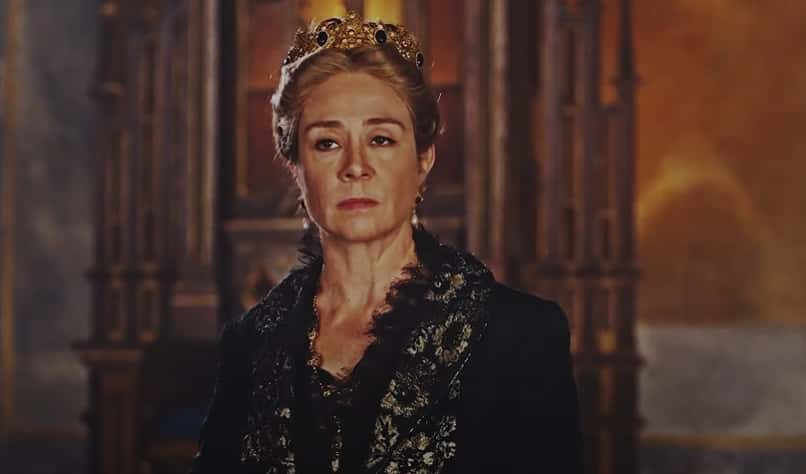 Reign (2013–2017), CBS Television Studios
Reign (2013–2017), CBS Television Studios
35. The Bodice-Ripper Brigade
The legend of Catherine de Medici’s “escadron volant,” or “flying squadron” of female spies has been contested by various historians, but one can’t deny its interesting place in her story, adjacent to tales of poison and intrigue. According to rumors, Catherine had a “stable” of about 80 beautiful ladies whom she would deploy to the beds of various courtiers for espionage and information networking. The name “flying squadron” had its roots in dance: when Catherine introduced ballet to the French court, her squadron gave its first performance as if they were flying.
36. Put on Your Dancing Chaussures
Most scholars consider the Ballet Comique de la Reine, performed at Catherine’s court in 1581, to be the first “authentic” ballet.
37. Dark Magicks
Catherine's retinue was an...interesting group of people. On top of her flying squadron, she employed many magicians and sorcerers as well. One of the most famous was Cosimo Ruggeri. Everyone in Paris knew of Ruggeri, the queen's "trusted necromancer, and specialist in the dark arts".
 Reign (2013–2017), CBS Television Studios
Reign (2013–2017), CBS Television Studios
38. Close Enough!
In July 1556, Catherine had Nostradamus draw horoscopes for her children. When he gave his grim prediction, Catherine regretted ever asking: Nostradamus foresaw that all of Catherine's sons would become kings...and that she would outlive every single one of them. This turned out to be almost true: only three of her five sons became kings, and she outlived all but two of her children. Close but no cigar.
39. King Baby
Catherine may have been the real power, but her son, Charles IX, was technically the king. I'm sure it didn't take much convincing for people to listen to her over him, though: the nine-year-old monarch cried the entire way through his coronation, almost never let his mommy out of his sight, and even made her sleep in his bedroom.
 Reign (2013–2017), CBS Television Studios
Reign (2013–2017), CBS Television Studios
40. She Led France Through Terrible Conflict
Catherine de Medici's rule was marked by brutal religious violence. Catholics wanted Protestants persecuted, while Protestants wanted the freedom to practice their religion. The tensions had been bubbling for the better part of a century, but when Catherine came to power, they finally exploded—and the results were devastating.
 Reign (2013–2017), CBS Television Studios
Reign (2013–2017), CBS Television Studios
41. The Bloodshed Begins
Even once Catherine became Governor of France, the Duke of Guise still held considerable sway in the French court. Catherine mostly put up with him—but she would pay the price for her patience. In 1562, Guise and his men committed the brutal Massacre of Vassy. They attacked a group of Protestants (called Huguenots in France at the time) while they had been worshipping in church.
When the violence finally settled down, 74 Huguenots lay dead, and another 104 wounded. Guise glibly called the massacre "a regrettable accident"—but he had no idea what he had just begun.
42. Chaos Reigns
The Massacre of Vassy sparked the French Wars of Religion, the defining conflict of Catherine de Medici's lifetime. Catholic and Huguenot armies would tear the French countryside apart for nearly 30 years—and Catherine, her children, and the rest of the French royal family were caught in the middle of it.
 Reign (2013–2017), CBS Television Studios
Reign (2013–2017), CBS Television Studios
43. Warrior Queen
Catherine de Medici took a remarkably hands-on approach to the French Wars of Religion. She could often be found visiting the field herself to manage affairs. When one of her generals told her that the battlefield was no place for a woman, she laughed and coldly replied, "My courage is as great as yours".
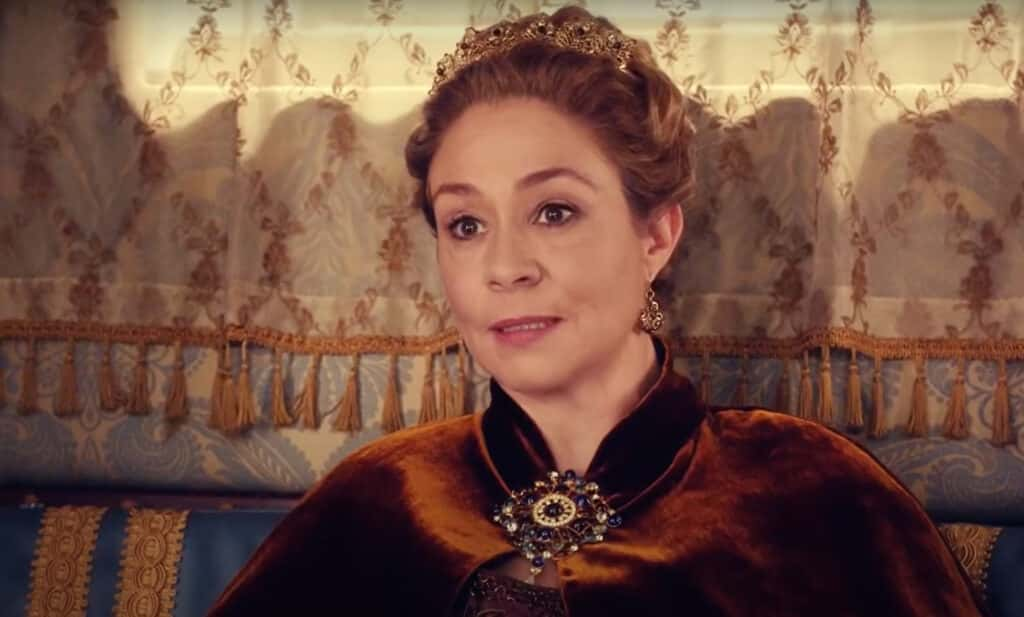 Reign (2013–2017), CBS Television Studios
Reign (2013–2017), CBS Television Studios
44. The One that Got Away
Catherine did a remarkable job placing her children in positions of power throughout Europe, but her greatest prize always escaped her: Queen Elizabeth I of England. Catherine desperately tried to wed one of her youngest sons to the Virgin Queen, but try as she might, Elizabeth stayed single for her entire life.
45. Catch These Hands
Catherine introduced perfumed gloves into French fashion, but her trendsetting raised suspicions when one of her greatest enemies, a Huguenot named Jeanne d’Albret, turned up dead. Almost immediately, rumors circulated that Catherine had murdered her with a gift of poisoned gloves. We may never know what happened to d'Albret, but her demise during a trip to Paris seemed a little too convenient to be a coincidence.
Accident or not, d'Albret's death was just the beginning—there was far more death to come.
46. The Shot Heard Around France
Three days after Jeanne D'Albret's mysterious death, Admiral Coligny, the leader of the Huguenot army, was shot while walking home. Catherine immediately went to Coligny's bedside to express her sympathy, but few believed her kind words. Whatever she claimed, the facts remained the same: two Huguenot leaders (and enemies of Catherine de Medici) were attacked while staying in Paris under her watch.
The Huguenots were furious, and the Catholics were convinced vengeance was imminent—but still, no one was prepared for the bloodbath that happened next.
47. "Kill Them All"
The Saint Bartholomew's Day Massacre is the darkest stain on Catherine de Medici's already disturbing record. As fears of Huguenot reprisals grew, King Charles finally made a grim order: "Kill them all! Kill them all!" But while he said the words, everyone knew that Catherine was the real power behind the throne. Catholics took to the streets with a vicious glee—but things quickly spiraled out of control.
 Reign (2013–2017), CBS Television Studios
Reign (2013–2017), CBS Television Studios
48. The Puppet Master
Many historians believe that Catherine orchestrated all of the events leading up to the Saint Bartholomew's Day Massacre from behind the scenes. After all, the Huguenots were in Paris on her invitation. The death of Jeanne D'Albret, the attack on Admiral Coligny, the final order to "Kill them all"—all these chess pieces had Catherine's fingerprints all over them.
The Massacre would have been a convenient way to get rid of many of Catherine's problems in one fell swoop—but it's hard to imagine she planned for the slaughter to get as horrific as it did.
49. Decimation
The Saint Bartholomew's Day Massacre began just a few days after Admiral Coligny's shooting, but the violence lasted for over a week. The killing started in Paris, but quickly spread to the countryside—no Huguenot was safe. Estimates on the total number of Protestants killed range from 5,000 to upwards of 30,000. It was utterly horrifying, but also morbidly effective. The Massacre completely crippled the source of Huguenot power, and marked a crucial turning point in the French Wars of Religion.
50. In the Face of it All—She Laughed
Henry III of Navarre, Jeanne d'Albret's son, only survived the Massacre by abandoning his faith and converting to Roman Catholicism. According to legend, as he knelt before the altar, Catherine turned to the court and burst into grim laughter. Thousands lay dead, but Catherine had achieved her goal.
 Reign (2013–2017), CBS Television Studios
Reign (2013–2017), CBS Television Studios
51. Your 20s Are Just Like That
Towards the end of his life, Catherine’s second son-king, Charles IX, became emotionally unstable. He would fluctuate from boasting about the body count of the St. Bartholomew’s Day Massacre, to being guilt-consumed by the atrocities, to simply blaming his mother for being “the cause of it all!” Ever the practical parent, Catherine declared she had a “lunatic” for a son.
52. But First, Let Me Paint a Selfie
Consider Catherine de Medici one of the earliest selfie enthusiasts; A huge patron of all arts, Catherine was particularly interested in personal portraiture and commissioned official portraits of all her family members and other members of the court. Demand for these early-modern selfies declined noticeably upon her death. Good news, Catherine, they've come back with a vengeance.
 Reign (2013–2017), CBS Television Studios
Reign (2013–2017), CBS Television Studios
53. Her Dead Sons Began to Pile Up
There was never a dull moment in 16th-century French society. Just a couple years after the Massacre, Catherine faced a new tragedy—and a new crisis. Following in the footsteps of his brother, Charles IX died of illness at just 23 years old. Even at his age, his final words were a desperate plea: "Oh, my mother..". Catherine was forced to bury yet another one of her children—but Charles would not be the last.
54. Momma's Boy's Turn
Next up for the throne was Catherine de Medici's favorite son, Henry, Duke of Anjou. But, since no one had expected the 23-year-old Charles to suddenly drop dead, Henry had gone off to the Polish-Lithuanian Commonwealth to become their king. Catherine sent him a heartbreaking plea to come back to France upon Charles' death. She sealed the letter with a tragic sentiment: "If I were to lose you, I would have myself buried alive with you..".
Henry quickly returned home to be crowned Henry III of France.
55. Foodie Fashions: Debunked!
The idea that Catherine introduced the fork from Italy to France is a routinely discredited myth. Historians point out that Catherine’s father-in-law, Francis, frequently dined at elite Italian tables, where he would have encountered and even imported their culinary practices long before her arrival. Nevertheless, the legend of Catherine as a culinary tastemaker endures, and I don't see her doing much to dispel that myth!
 Reign (2013–2017), CBS Television Studios
Reign (2013–2017), CBS Television Studios
56. Problem Child
Catherine's youngest son, Francis, was always the black sheep of the family. Known mysteriously as "Monsieur," Francis was initially far down in the line of succession. No one ever expected him to amount to much—but suddenly, with Charles dead and Henry lacking children, Monsieur suddenly found himself next up to sit on the throne. But rather than come home and do his duty, Francis cruelly betrayed his mother, and laid waste to everything she had accomplished.
57. A Rebel Without a Cause
In 1576, Francis did the unthinkable: he allied with the Protestants against his brother and mother. The unlikely alliance forced Catherine to sign the humiliating Edict of Beaulieu, giving in to Huguenot demands for the first time in years. Unsurprisingly, Catherine was utterly furious with her rebellious son—when she finally got her hands on him, she allegedly lectured at him for six straight hours.
But despite Francis's treachery, she was still utterly devastated when fate came to claim him as well.
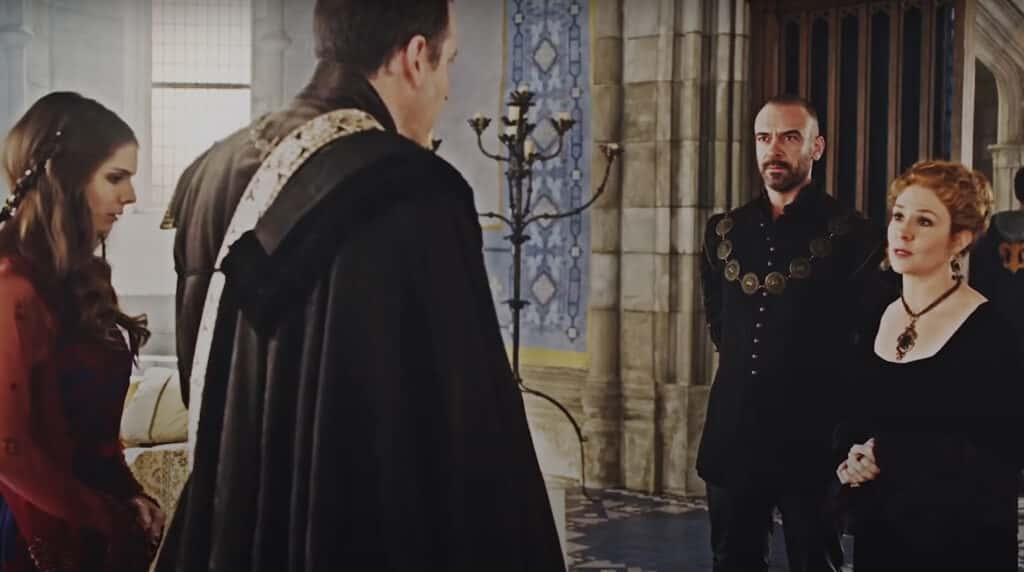 Reign (2013–2017), CBS Television Studios
Reign (2013–2017), CBS Television Studios
58. Another Tombstone
Francis was the next of Catherine de Medici's children to die young. Not only was Catherine forced to watch him put in the ground like his brothers and sisters, but his death also put her entire legacy at risk. Francis was the last of her sons, and since King Henry had no children, now Henry III of Navarre, her daughter's husband, sat next in line.
59. Mothers and Daughters
Everything that Catherine had built was quickly falling apart around her—and her problems were only beginning. Now that Henry of Navarre was heir to the French throne, her daughter Margaret, Henry's wife, was more important than ever. But Margaret was even more rebellious than Monsieur had been. She dared to cross her mother, and Catherine's revenge was utterly brutal.
60. Mom is Not Happy
Margaret's constant affairs had been a problem before she married Henry III of Navarre, and let's just say, marriage did little to settle her down. When Margaret returned to the French court in 1582 (notably without her husband), Catherine furiously confronted her about her dalliances. Catherine de Medici's fury was always something to behold, and her screams could apparently be heard echoing throughout the palace.
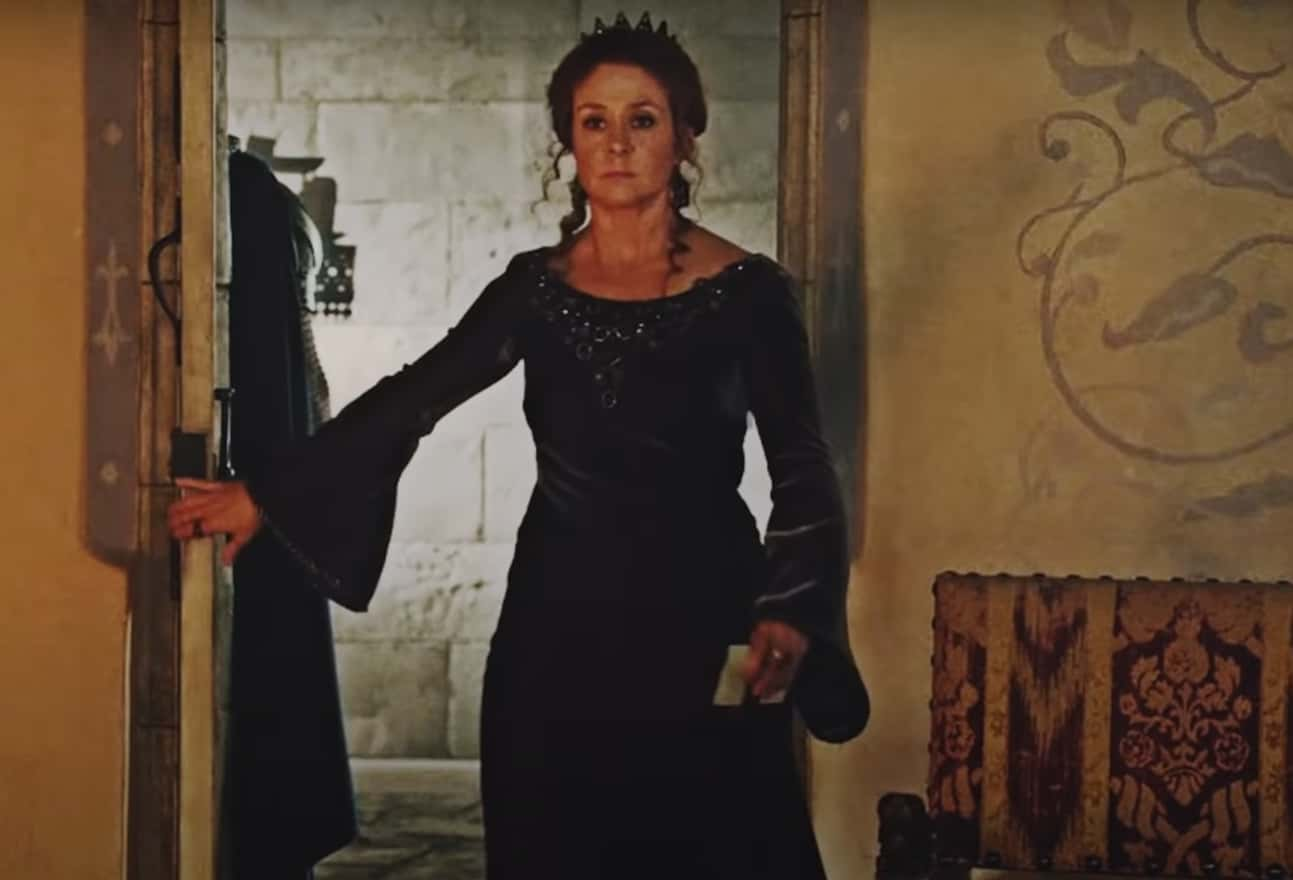 Reign (2013–2017), CBS Television Studios
Reign (2013–2017), CBS Television Studios
61. She Just Would Not Listen
After taking a stripe off of her daughter, Catherine sent Margaret back to Navarre to be with her husband—the future king of France. But, apparently Catherine's yelling hadn't straightened out the rebellious Margaret. Soon after, Margaret left Navarre yet again, fleeing to an estate in the French countryside. That was bad enough on its own, but what she did next was even more infuriating...
62. She Disobeyed, Then Begged For Money
Margaret disobeyed her mother yet again and left her husband—then she had the audacity to write to Catherine and beg for money. Disgusted, Catherine sent her daughter only enough money to eat, yet somehow, Margaret wasn't done making a mess of things. She took yet another lover, a man named d'Aubiac. This was the final straw. Catherine was done with her daughter's antics, and her final judgment was utterly chilling.
 Reign (2013–2017), CBS Television Studios
Reign (2013–2017), CBS Television Studios
63. You Are Dead To Me
After finding out about d'Aubiac, Catherine had her daughter locked up in a castle and cut out of her will completely. She never saw Margaret again—as far as Catherine was concerned, her child was dead to her. Sure, that seems cold—but what Catherine did to Margaret's lover was even worse.
64. Sending a Message
Catherine's plans for what to do with d'Aubiac were too cruel even for her son, King Henry. Henry had d'Aubiac executed...but not, as Catherine had wanted, in front of Margaret. Small victories, I guess...
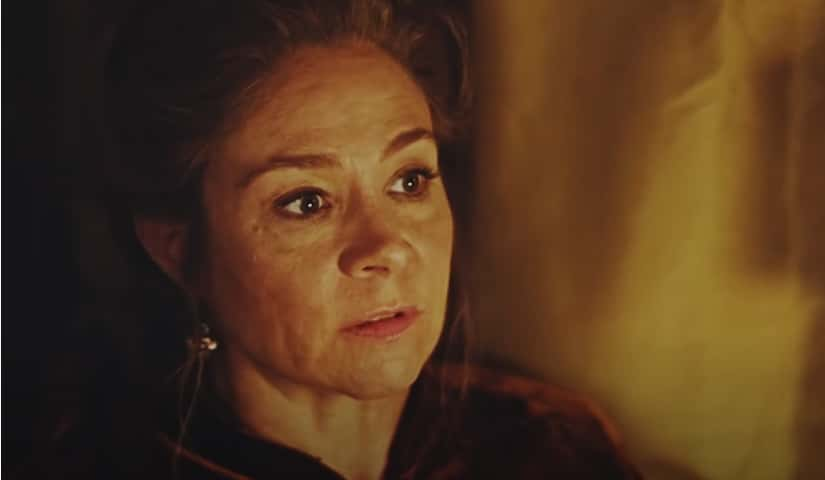 Reign (2013–2017), CBS Television Studios
Reign (2013–2017), CBS Television Studios
65. Whispers of the Devil
Catherine de Medici’s superstitious nature and dark reputation lent themselves to the rumor that she invented the Black Mass, a Satanic send-up of the traditional Catholic Mass. Of course, there's very little to prove this outside of a scandalous book by Jean Bodin.
 Reign (2013–2017), CBS Television Studios
Reign (2013–2017), CBS Television Studios
66. Gold Will Be Their Shrouds…
Despite giving birth to ten children, Catherine outlived every single one, save for Henry III (who met his dark fate mere months after Catherine) and Margaret (who inherited her mother’s robust health and aversion to being stabbed).
 Reign (2013–2017), CBS Television Studios
Reign (2013–2017), CBS Television Studios
67. Time to Cut the Apron Strings
Henry III valued his mother Catherine’s advice—until her final days. Catherine had contracted a lung infection and was left bedridden. While she was fighting for her life, she had no idea that her son was plotting to cut her off from power for good. In 1588, Henry fired every single one of his advisors with absolutely no warning. Many of these advisors had been in Catherine's pocket, and this stunning move left Catherine with next to no influence in court.
Catherine was devastated when news of the betrayal reached her ear—but what Henry did next was even worse.
68. Her Son Could be Just as Ruthless as Her
After dismissing all of his mother's cronies, the Duke of Guise was one of the last people between Henry and absolute power. Catherine had already warned him that getting rid of Guise would be an utter disaster, but Henry wanted blood. In December 1588, Henry invited Guise to come visit him in his chambers. Unaware of the king's plans, the Duke happily accepted the invitation—and walked into his brutal fate.
69. The Purge
When the Duke of Guise stepped through the threshold into Henry's chambers, he found the king's personal bodyguard waiting for him. They set upon him with their swords, cutting him down where he stood—but they weren't done yet. At that very instant, the rest of the Guise family were being rounded up and killed as well. For the first time in his life, Henry had completely disregarded his mother and acted on his own accord—and he would pay a terrible price for it.
70. Too Much For a Dying Mother
In a grim coincidence, the murder of the Duke of Guise, done expressly against Catherine's wishes, took place directly above the bed chamber where she lay dying. After the deed was done, King Henry ventured downstairs and broke the news to his mother himself: "Please forgive me. Monsieur de Guise is dead. He will not be spoken of again. I have had him killed. I have done to him what he was going to do to me".
This final betrayal destroyed Catherine. She died mere days later, and most people believed that the shock of her son's rash actions finally killed her.
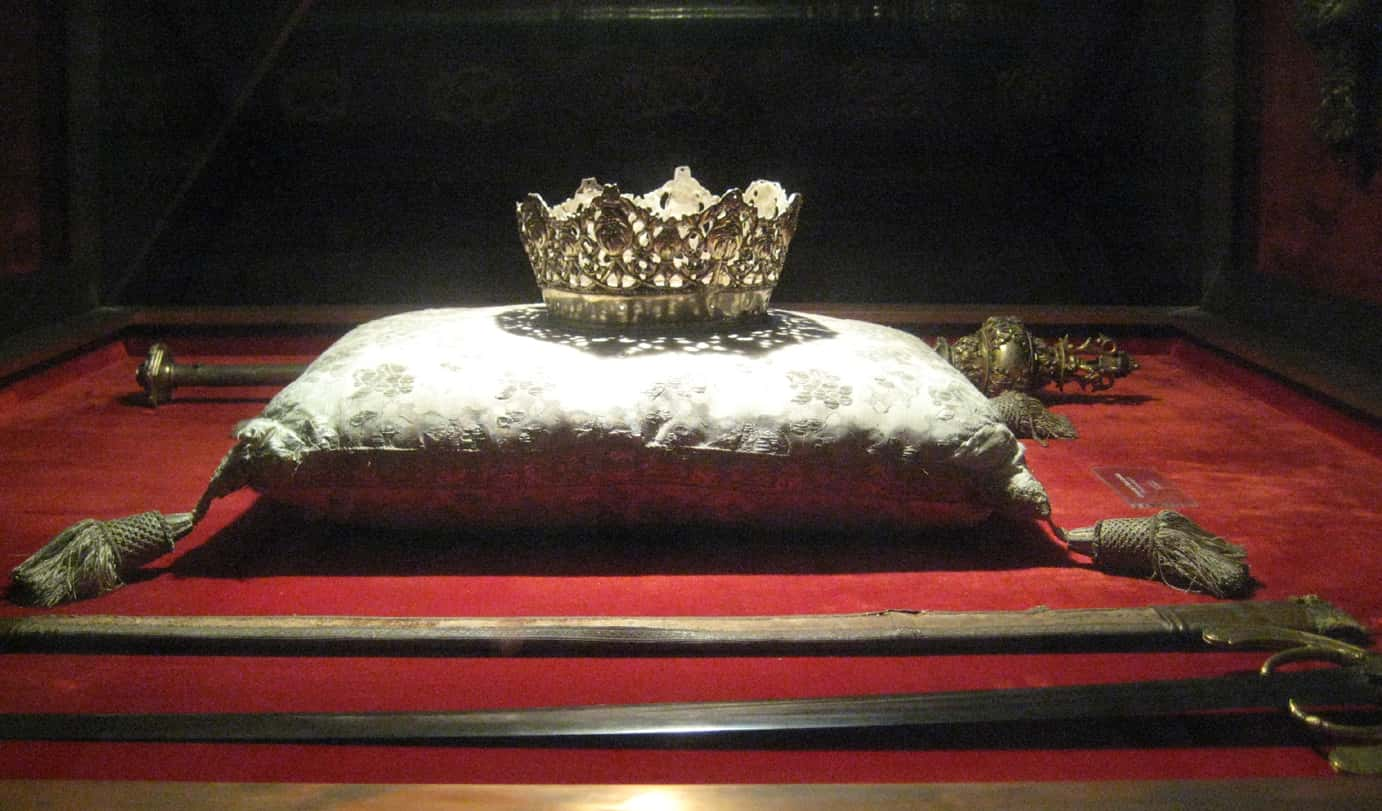 Wikimedia Commons, user:shakko
Wikimedia Commons, user:shakko
71. You Did This
After laying waste to the Guise family, Henry rounded up several people whom he considered political enemies. One of these people was the Cardinal of Bourbon, one of Catherine de Medici's oldest friends. Not long before her death, Catherine went to visit the Cardinal in his cell. She tried to tell him she would get him set free, but the spiteful Cardinal had no time for her empty promises.
Through the bars of his cell, he cried, "Your words, Madam, have led us to all this butchery". Catherine fled their final meeting in tears.
 Reign (2013–2017), CBS Television Studios
Reign (2013–2017), CBS Television Studios
72. A Violent Man, A Violent Death
A mere eight months after Catherine's death, karma came knocking at Henry III's door. The purge of his political enemies did little to settle the chaos in the French court, and he was eventually stabbed to death by a Catholic fanatic.
73. Tossed in a Whole
Catherine de Medici played the game of thrones, and played it well, for decades, but like many French nobles, she ended up in an extremely ignoble resting place. Catherine's bones, along with those of many other French kings and queens, were dug up during the French Revolution and unceremoniously tossed into a mass grave.
 Reign (2013–2017), CBS Television Studios
Reign (2013–2017), CBS Television Studios
74. In-Laws, Am I Right?
After the death of Catherine and her final son, Henry III, Catherine’s son-in-law seized the throne as Henry IV of France. However, he promptly annulled his marriage to Catherine’s daughter, Margaret, and replaced her with Catherine’s own cousin, Marie de Medici! (At least your blood stayed on the throne, Catherine).
75. Do Not Get in Catherine de Medici's Way
During the French Wars of Religion, Catherine tried to seek peace with a political marriage between her daughter and Henry III of Navarre. There was just one problem: Margaret couldn't stop sleeping around long enough to secure the union. It turns out, at the time Catherine made the betrothal, Margaret was having an affair...with the son of Catherine's great rival, the Duke of Guise. When Catherine found out about her daughter's betrayal, her reaction was so disturbing, it's impossible to forget.
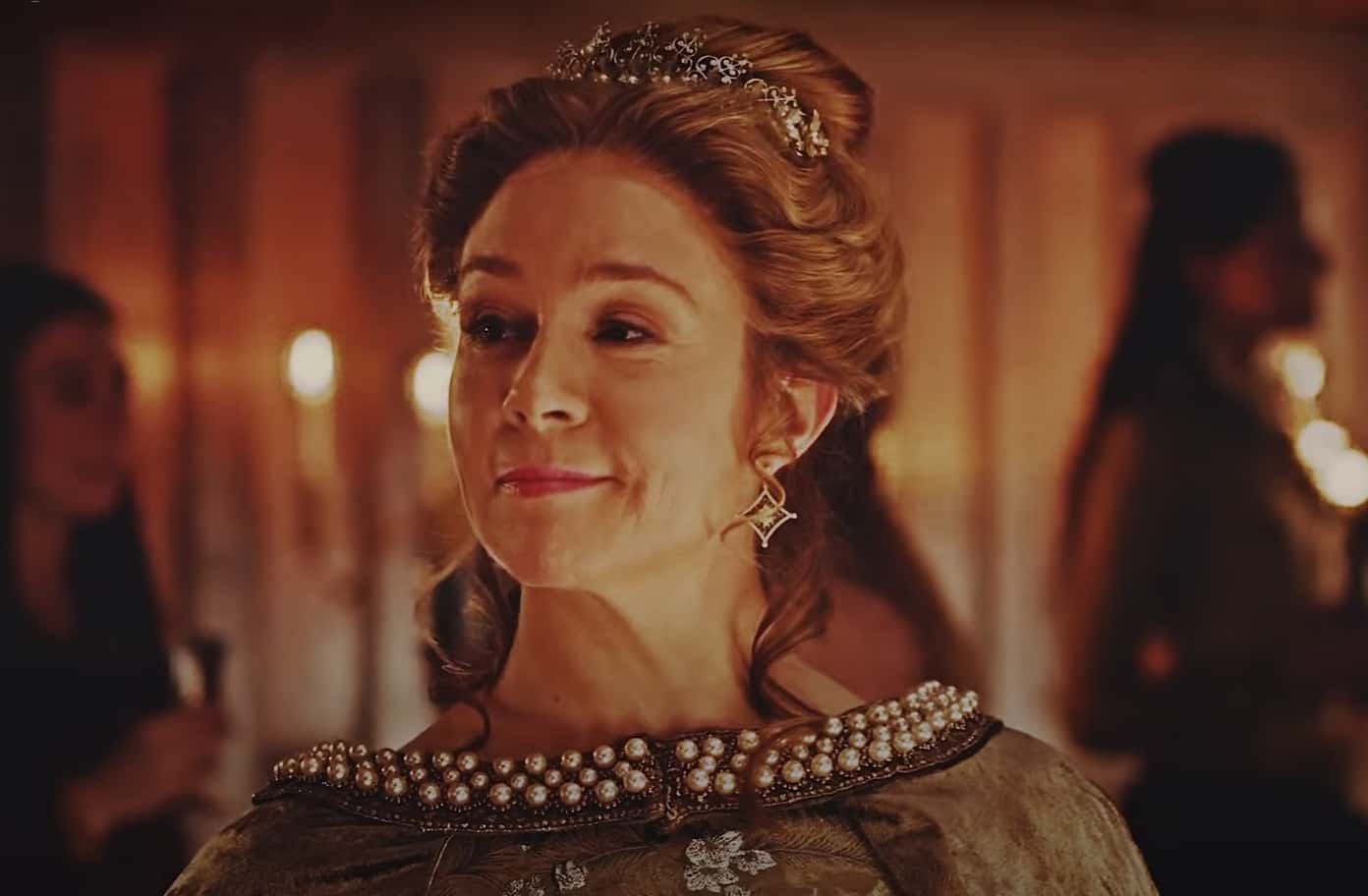 Reign (2013–2017), CBS Television Studios
Reign (2013–2017), CBS Television Studios
76. Ripping and Tearing
Margaret's affair with Henry of Guise jeopardized everything Catherine had been working for, so when she found out, she absolutely lost it. She immediately had Margaret pulled from her bed and brought before her. Then, Catherine and King Charles IX viciously beat Margaret, tearing her nightgown and ripping out clumps of her hair. Suitably terrified, Margaret agreed to the wedding.
 Reign (2013–2017), CBS Television Studios
Reign (2013–2017), CBS Television Studios
77. Our Lady of Vindication
Catherine was cordial to her husband’s mistress Diane de Poitiers…during his lifetime. As Henry lay dying from his jousting accident, her true feelings revealed themselves. Catherine denied de Poitiers any access to Henry's deathbed, ignoring her husband’s final, desperate pleas for his lover. After his death, she banished de Poitiers and her friends from Paris. But Catherine was just getting started...
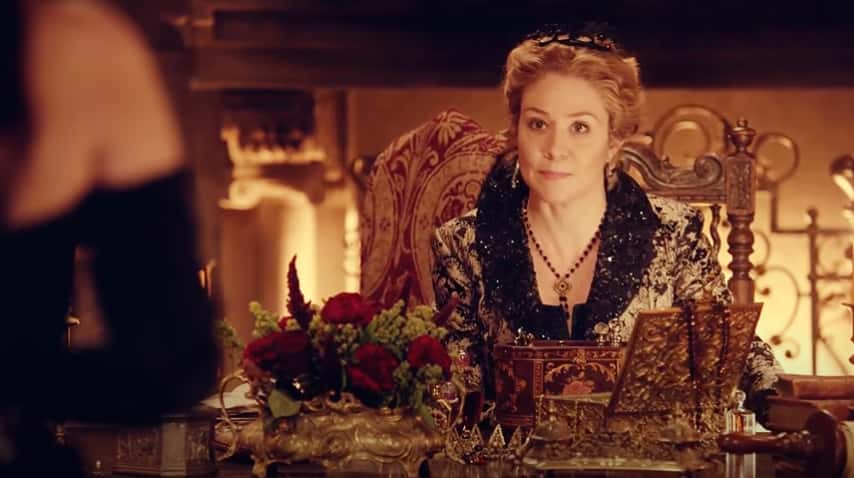 Reign (2013–2017), CBS Television Studios
Reign (2013–2017), CBS Television Studios
78. You Took Him From Me—So I'll Take Everything From You
Exiling de Poitiers wasn't nearly enough to satisfy Catherine. She also ordered the surrender of de Poitiers’ fine jewels and her great castle, the Chateau de Chenonceau. Even years later, Catherine made her real opinion heard on de Poitiers in a letter to one of her children: “Never has a woman who loved her husband liked his [mistress]".
79. Paternal & Papal Invasions of Privacy
Catherine de Medici got a disturbing introduction to the world of French politics on her wedding night. She and Henry were just lucky to be the same age, both 14 years old, but old men still wormed their way into the honeymoon. Henry’s father, King Francis I, apparently stayed in the bedroom until the marriage was fully consummated.
Catherine's uncle, Pope Clement, had a little bit more class at least—he visited the couple in bed the next morning to confirm the previous night’s “proceedings". Yick.
80. First Time's the Charm?
If King Francis is to be believed, Catherine and Henry were plenty randy on their wedding night. In his review of the evening, he commented that both his son and new daughter-in-law "had shown valor in the joust". Because it's not bad enough that he was there, he had to give a performance review.
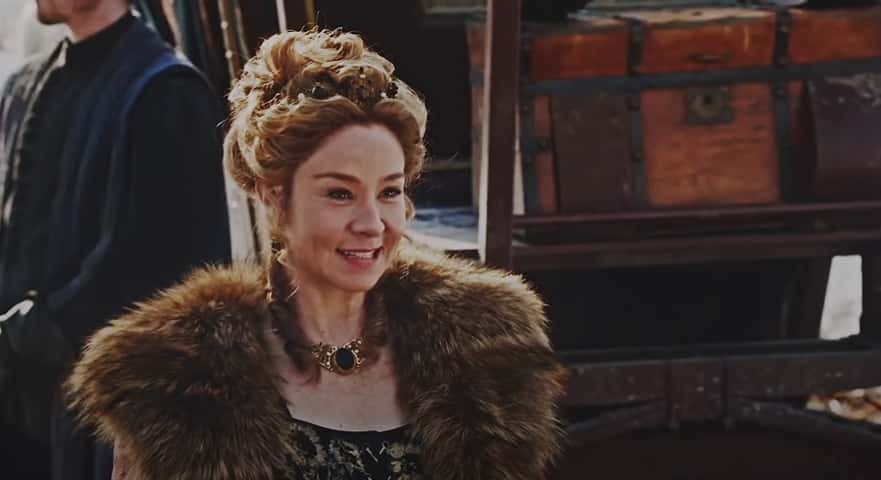 Reign (2013–2017), CBS Television Studios
Reign (2013–2017), CBS Television Studios
Sources: 1, 2, 3, 4, 5, 6, 7, 8, 9, 10, 11, 12, 13, 14, 15, 16, 17



